Looking for Expert-Level VA Claim Answers?📱Call Us Now! 737-295-2226
This VA disability conditions list is “The Ultimate Guide” to the Top 50 VA Disability Percentages for Conditions.
Let’s talk briefly about the methodology we used to create this high-value VA disability list of conditions.
First, we used the most recent VA Report on Disability Compensation to reveal and explain the Top 10 Most Common VA Disability Claims.
Second, we used our experience helping over 25,000 disabled veterans since 2016 to round out the next 30 most common VA claims, which brought us to a total of 40.
Finally, we compared the Top 3 VA Claims by Body System (there are 15 total body systems that make up the VA disability compensation system) to come up with the VA disability claims list of the 50 most common VA claims and their ratings.
Alright, let’s jump in.
You Might Also Like the Following Blog Posts:
- Top 10 Most Common VA Disability Claims
- 10 Easiest Things to Claim for VA Disability This Year
- Top 20 VA Disability Claims Explained
- VA Claims List: What are the Top 10 VA Claims and Their Ratings?
- What are the Top 50 VA Disability Percentages for Conditions?
- #1. Tinnitus
- #2. Limitation of Flexion, Knee
- #3. Hearing Loss
- #4. Post-Traumatic Stress Disorder (PTSD)
- #5. Lumbosacral or Cervical Strain
- #6. Paralysis of the Sciatic Nerve (Sciatica)
- #7. Scars, General
- #8. Limitation of Range of Motion of the Ankle
- #9. Limitation of Motion of the Arm
- #10. Migraines (Headaches)
- #11. Degenerative Arthritis of the Spine
- #12. Sleep Apnea
- #13. Traumatic Brain Injury (TBI)
- #14. Major Depressive Disorder
- #15. Asthma
- #16. Diabetes (Type 2)
- #17. Cancer
- #18. Anxiety Disorders
- #19. Pes Planus (Flat Feet)
- #20. Radiculopathy
- #21. Chronic Adjustment Disorder
- #22. Somatic Symptom Disorder (Chronic Pain Syndrome)
- #23. Gastroesophageal Reflex Disease (GERD)
- #24. Irritable Bowel Syndrome (IBS)
- #25. Erectile Dysfunction (ED)
- #26. Plantar Fasciitis (Heel Pain)
- #27. Arthritis (Various)
- #28. Hypertension (High Blood Pressure)
- #29. Degenerative Disc Disease (DDD)
- #30. Carpal Tunnel Syndrome (CTS)
- #31. Chronic Fatigue Syndrome (CFS)
- #32. Fibromyalgia
- #33. Eczema
- #34. Allergic Rhinitis (Hay Fever)
- #35. Sinusitis
- #36. Meniere’s Syndrome
- #37. Arteriosclerotic Heart Disease (Coronary Artery Disease)
- #38. Chronic Conjunctivitis
- #39. Limited Motion of the Jaw (Temporomandibular Disorder)
- #40. Hiatal Hernia
- #41. Hemorrhoids
- #42. Varicose Veins
- #43. Nephrolithiasis (Kidney Stones)
- #44. Hypothyroidism
- #45. Anemia
- #46. Peripheral Neuropathy
- #47. Prostate Gland Injuries
- #48. Ischemic Heart Disease
- #49. Vertigo
- #50. Urinary Incontinence
- Want to Increase Your VA Rating in Less Time? WE GOT YOUR SIX!
- About the Author
VA Claims List: What are the Top 10 VA Claims and Their Ratings?
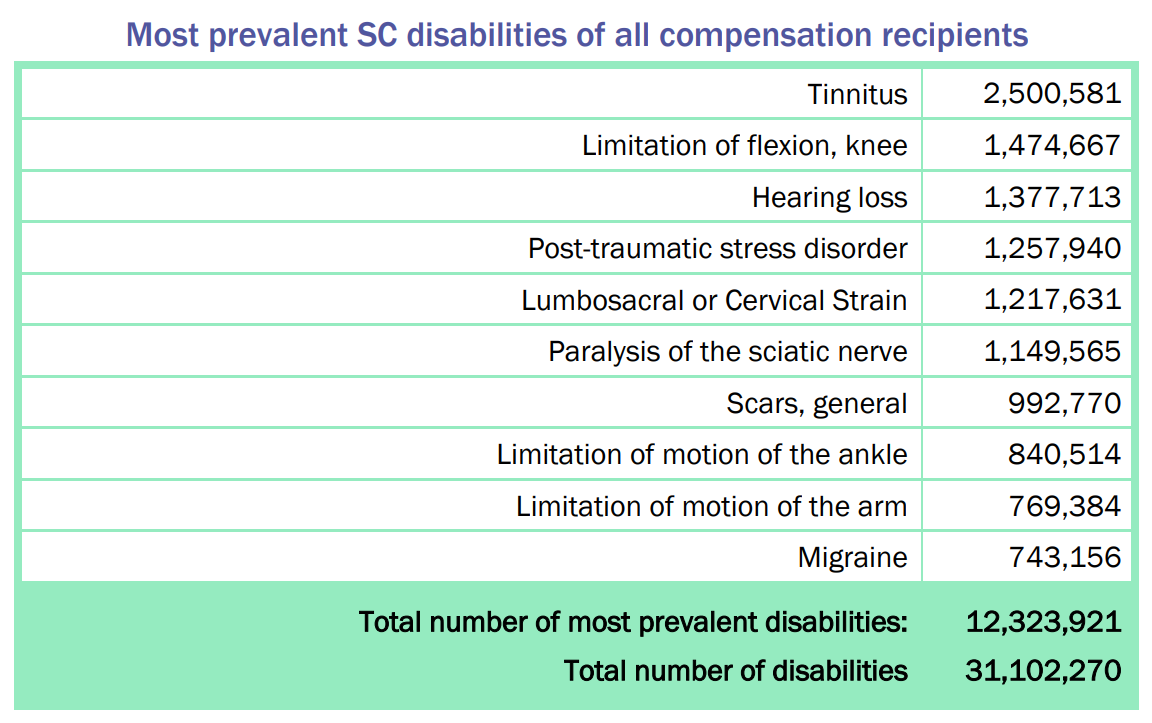
Here’s a list of the top 10 most common VA claims and their VA claim percentages:
- #1. Tinnitus: rated at 10%
- #2. Limitation of Flexion of the Knee: rated at 10%
- #3. Hearing Loss: rated at 0%
- #4. Post-Traumatic Stress Disorder (PTSD): rated at 70%
- #5. Lumbosacral or Cervical Strain: rated at 10%
- #6. Paralysis of the Sciatic Nerve (Sciatica): rated at 20%
- #7. Scars, General: rated at 0%
- #8. Limitation of Range of Motion of the Ankle: rated at 10%
- #9. Limitation of Motion of the Arm: rated at 10%
- #10. Migraines (Headaches): rated at 30%
What are the Top 50 VA Disability Percentages for Conditions?

Here’s the VA disability conditions list of VA disability ratings (averages) for the top 50 VA disability claims:
- #1. Tinnitus: rated at 10%
- #2. Limitation of Flexion of the Knee: rated at 10%
- #3. Hearing Loss: rated at 0%
- #4. Post-Traumatic Stress Disorder (PTSD): rated at 70%
- #5. Lumbosacral or Cervical Strain: rated at 10%
- #6. Paralysis of the Sciatic Nerve (Sciatica): rated at 20%
- #7. Scars, General: rated at 0%
- #8. Limitation of Range of Motion of the Ankle: rated at 10%
- #9. Limitation of Motion of the Arm: rated at 10%
- #10. Migraines (Headaches): rated at 30%
- #11. Degenerative Arthritis of the Spine: rated at 10%
- #12. Sleep Apnea: rated at 50%
- #13. Traumatic Brain Injury (TBI): rated at 30%
- #14. Major Depressive Disorder: rated at 70%
- #15. Asthma rated at 10%
- #16. Diabetes Type 2: rated at 20%
- #17. Cancer: rated at 100% (when active; if not active, it’s rated under residuals)
- #18. Generalized Anxiety Disorder: rated at 70%
- #19. Pes Planus (Flat Feet): rated at 20%
- #20. Radiculopathy: rated at 20%
- #21. Adjustment Disorder: rated at 70%
- #22. Somatic Symptom Disorder (Chronic Pain Syndrome): rated at 70%
- #23. Gastroesophageal Reflex Disease (GERD): rated at 30%
- #24. Irritable Bowel Syndrome (IBS): rated at 30%
- #25. Erectile Dysfunction: rated at 0%
- #26. Plantar Fasciitis: rated at 20%
- #27. Arthritis: rated at 20%
- #28. Hypertension (High Blood Pressure): rated at 10%
- #29. Degenerative Disc Disease (DDD): rated at 20%
- #30. Carpal Tunnel Syndrome (CTS): rated at 10%
- #31. Chronic Fatigue Syndrome (CFS): rated at 20%
- #32. Fibromyalgia: rated at 20%
- #33. Eczema: rated at 10%
- #34. Allergic Rhinitis (Hay Fever): rated at 10%
- #35. Sinusitis: rated at 30%
- #36. Meniere’s Syndrome: rated at 30%
- #37. Arteriosclerotic Heart Disease (Coronary Artery Disease): rated at 30%
- #38. Chronic Conjunctivitis: rated at 10%
- #39. Limited Motion of the Jaw (Temporomandibular Disorder): rated at 10%
- #40. Hiatal Hernia: rated at 30%
- #41. Hemorrhoids: rated at 0%
- #42. Varicose Veins: rated at 0%
- #43. Nephrolithiasis (Kidney Stones): rated at 10%
- #44. Hypothyroidism: rated at 30%
- #45. Anemia: rated at 10%
- #46. Peripheral Neuropathy: rated at 20%
- #47. Prostate Gland Injuries: rated at 0%
- #48. Ischemic Heart Disease: rated at 30%
- #49. Vertigo: rated at 10%
- #50. Urinary Incontinence: rated at 10%
Now that we know the top 50 VA disability claims, let’s explore the list in detail, along with symptoms and VA disability percentages for conditions.
You should consider this list of “Top VA Disability Claims” when you go to file a VA claim.
We’ve also added “Pro Tips” for each condition, along with their ratings, so you’ll know the best way to get your disabilities service-connected and rated at the highest level allowed by law.
Let’s go!
#1. Tinnitus
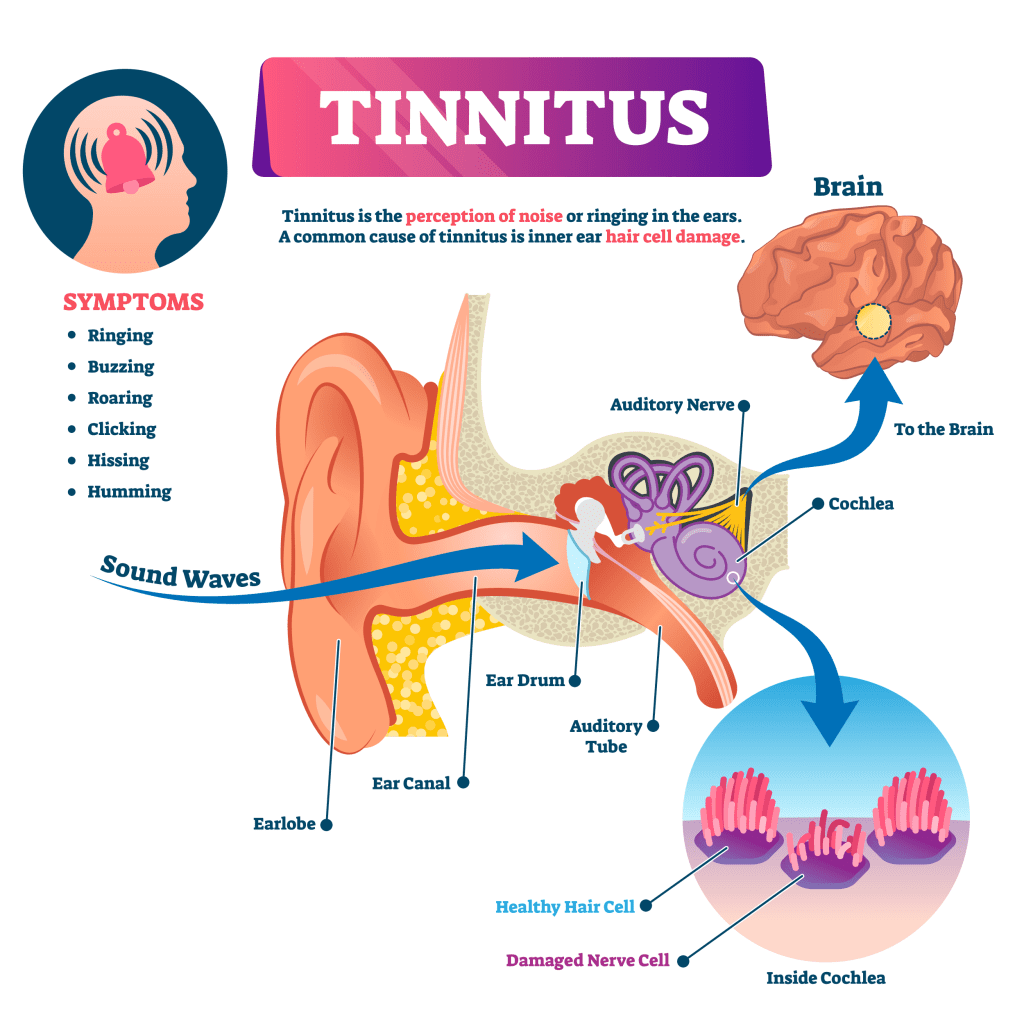
Tinnitus, otherwise known as “Ringing-in-the-Ear-Syndrome” is the #1 most common VA disability.
Tinnitus is when you experience ringing, hissing, buzzing, or other noises in one or both of your ears.
The ringing in your ears isn’t caused by an external sound, and other people usually can’t hear it, which is a condition called “Subjective Tinnitus.”
The VA rates Tinnitus under CFR Title 38, Part 4, Schedule for Rating Disabilities, Diagnostic Code (DC) 6260, Tinnitus, Recurrent.
The only VA Rating for Tinnitus is 10%.
There are no higher or lower ratings.
In total, 2,500,581 disabled veterans are service-connected for Tinnitus.
Pro Tip: There is no test for “Subjective” Tinnitus, which is the most common type of Tinnitus. Only you can hear Subjective Tinnitus, and you either have it or you don’t. Write a strong Statement in Support of a Claim for Tinnitus and explain the in-service event or injury that led to your ringing in the ear (e.g., worked on a flight line without property hearing protection).
#2. Limitation of Flexion, Knee

Limitation of Flexion of the Knee is the #2 most common VA disability claim.
Knee pain is a common complaint that affects veterans of all ages.
Knee pain may be the result of an injury, such as a ruptured ligament or torn cartilage.
Other medical conditions, such as arthritis, gout, and infections, can also cause knee pain.
The VA rates knee conditions under CFR Title 38, Part 4, Schedule for Rating Disabilities, DC 5257, Knee Impairment.
VA Ratings for Limitation of Flexion of the Knee range from 0 percent to 30 percent, with interim breaks at 10 percent and 20 percent.
The highest schedular rating for limitation of flexion of the knee is 30%, which includes the following symptoms:
Recurrent subluxation or instability: Unrepaired or failed repair of complete ligament tear causing persistent instability, and a medical provider prescribes both an assistive device (e.g., cane(s), crutch(es), walker) and bracing for ambulation.
What are the VA disability ratings for Knee Pain?
If you have unfavorable ankylosis of the knee, it’s rated under DC 5256 instead, which has ratings of 30%, 40%, 50%, and 60% depending on the frequency, severity, and duration of symptoms to include limitation of range of motion:
- Extremely unfavorable knee ankylosis, with limitation of flexion at an angle of 45° or more is rated at 60%
- Unfavorable knee ankylosis with limitation of flexion between 20° and 45° is rated at 50%
- Knee ankylosis with limitation of flexion between 10° and 20° is rated at 40%
- Favorable angle in full extension, or in slight flexion between 0° and 10° is rated at 30%
1,474,667 disabled veterans suffer from service-connected knee pain.
Pro Tip: In accordance with the “Painful Motion” principle, if you have pain upon flexion or extension of your knee, the VA is required to award the minimum compensable rating for the condition, which is 10 percent.
#3. Hearing Loss
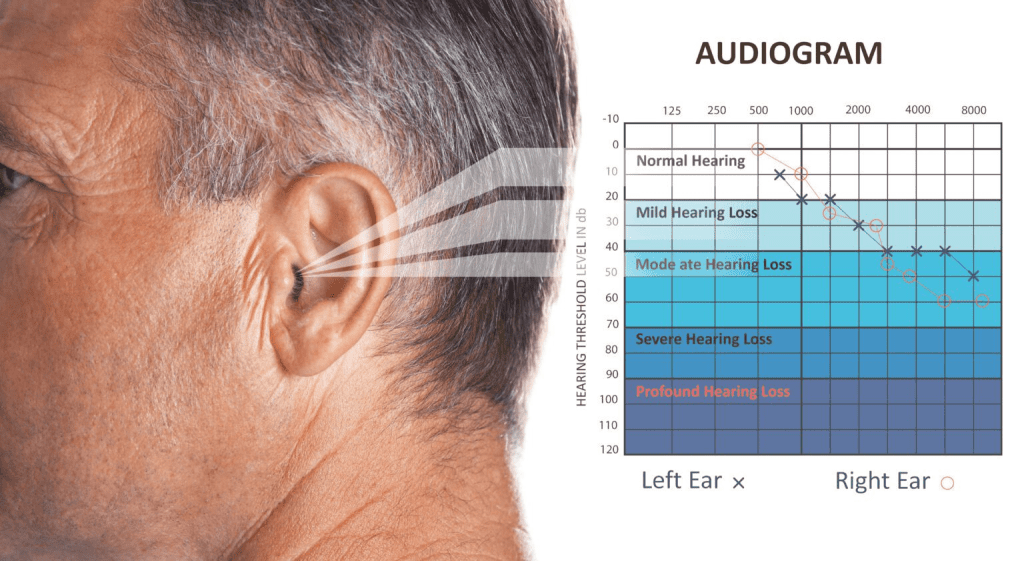
Hearing Loss is the #3 top VA disability claim.
Hearing Loss is quite common in veterans and is defined by one of three types:
- Conductive (involves outer or middle ear)
- Sensorineural (involves inner ear)
- Mixed (combination of the two)
Aging and chronic exposure to loud noises (e.g., aircraft flight lines, gun ranges, heavy equipment) most contribute to Hearing Loss.
The VA rates Hearing Loss under CFR Title 38, Part 4, Schedule for Rating Disabilities, DC 6100, Hearing Loss.
VA Ratings for Hearing Loss range from 0 percent to 100 percent, with breaks at 10 percent, 20 percent, 30 percent, 40 percent, 50 percent, 60 percent, 70 percent, 80 percent, and 90 percent although the average VA rating for Hearing Loss is 10 percent, and many veterans have a 0 percent rating.
The highest scheduler rating for Hearing Loss is 100 percent, which means you have total deafness in both ears.
There are 1,377,713 disabled veterans service-connected for Hearing Loss.
Pro Tip: If you’ve been out of the military for more than 12 months, Hearing Loss is one of the most difficult claims to get service connected and rated above 0%. Get a Medical Nexus Letter to improve your odds of service-connected Hearing Loss.
#4. Post-Traumatic Stress Disorder (PTSD)

PTSD is the #4 most common VA claim.
PTSD is a mental health condition that’s triggered by experiencing or witnessing a terrifying event, which the VA calls a “stressor event.”
Common symptoms of PTSD include flashbacks, nightmares, severe anxiety, depression, or uncontrollable thoughts about the event.
The VA rates PTSD under CFR Title 38, Part 4, Schedule for Rating Disabilities, General Rating Formula for Mental Disorders, DC 9411, Post-Traumatic Stress Disorder.
VA Disability Ratings for PTSD range from 0 percent to 100 percent, with breaks at 10 percent, 30 percent, 50 percent, and 70 percent.
The average VA rating for PTSD is 70%.
The highest scheduler rating for PTSD is 100 percent.
What is the PTSD VA rating scale?
100% VA Rating Criteria for PTSD: Total occupational and social impairment.
Symptoms include, but are not limited to:
- Gross impairment in thought processes or communication
- Persistent delusions or hallucinations
- Grossly inappropriate behavior
- Persistent danger of hurting self or others
- Intermittent inability to perform activities of daily living (including maintenance of minimal personal hygiene)
- Disorientation to time or place
- Memory loss for names of close relatives, own occupation, or own name
70%: Occupational and social impairment, with deficiencies in most areas, such as work, school, family relations, judgment, thinking, or mood.
Symptoms of the 70 percent VA rating for PTSD include but are not limited to:
- Suicidal ideation
- Obsessive rituals which interfere with routine activities
- Speech intermittently illogical, obscure, or irrelevant
- Near-continuous panic or depression affecting the ability to function independently, appropriately, and effectively
- Impaired impulse control (such as unprovoked irritability with periods of violence)
- Spatial disorientation
- Neglect of personal appearance and hygiene
- Difficulty in adapting to stressful circumstances (including work or a work-like setting)
- Inability to establish and maintain effective relationships
50%: Occupational and social impairment with reduced reliability and productivity.
Symptoms of the 50 percent VA rating for PTSD include but are not limited to:
- Flattened affect
- Circumstantial, circumlocutory, or stereotyped speech
- Panic attacks more than once a week
- Difficulty in understanding complex commands
- Impairment of short and long-term memory (e.g., retention of only highly learned material, forgetting to complete tasks)
- Impaired judgment
- Impaired abstract thinking
- Disturbances of motivation and mood
- Difficulty in establishing and maintaining effective work and social relationships
30%: Occupational and social impairment with occasional decrease in work efficiency and intermittent periods of inability to perform occupational tasks (although generally functioning satisfactorily, with routine behavior, self-care, and conversation normal).
The 30 percent rating for PTSD has symptoms that include but are not limited to:
- Depressed mood
- Anxiety
- Suspiciousness
- Panic attacks (weekly or less often)
- Chronic sleep impairment
- Mild memory loss (such as forgetting names, directions, recent events)
10%: Occupational and social impairment due to mild or transient symptoms which decrease work efficiency and ability to perform occupational tasks only during periods of significant stress, or symptoms controlled by continuous medication.
The 10 percent VA rating for PTSD has very mild symptoms that only flare up during periods of high stress.
0%: A mental condition has been formally diagnosed, but symptoms are not severe enough either to interfere with occupational and social functioning or to require continuous medication.
The 0 percent PTSD rating has no symptoms or continues medication keeps your symptoms in-check.
According to the VA’s published statistics, 1,257,940 disabled veterans have a service-connected VA disability rating for PTSD.
Pro Tip: PTSD claims always have a stressor event. If you’re wondering if your PTSD stressor is strong enough, here’s a quick litmus test: Did you fear for your life? If yes, your stressor is good enough to get a service-connected PTSD rating.
Also note that it’s highly unlikely to receive a separate rating for PTSD if you’re already rated for another mental health condition due to the avoidance of pyramiding, and the overlap of symptoms across multiple diagnoses.
#5. Lumbosacral or Cervical Strain

Lumbosacral or Cervical Strain is neck pain, and it’s the #5 most claimed VA disability.
Neck pain is very common among veterans.
Neck muscles can be strained from poor posture, carrying heavy things, deployments, leaning over your computer, etc.
The VA rates Lumbosacral or Cervical Strain under CFR Title 38, Part 4, Schedule for Rating Disabilities, DC 5237.
VA Ratings for Neck Pain range from 10 percent to 100 percent, with breaks at 20 percent, 30 percent, 40 percent, and 50 percent.
The highest scheduler rating for neck pain is 100 percent, which means your entire spine is frozen in an unfavorable position.
A total of 1,217,631 disabled veterans are rated for neck conditions.
Pro Tip: In accordance with the “Painful Motion” principle, if you have pain upon flexion or extension of your neck, the VA is required to award the minimum compensable rating for the condition, which is 10 percent.
#6. Paralysis of the Sciatic Nerve (Sciatica)

Sciatica (paralysis of the sciatic nerve) is the #6 most often claimed and service-connected VA disability.
Sciatica refers to pain that radiates along the path of the sciatic nerve, which branches from your lower back through your hips and buttocks and down each leg.
Sciatica most commonly occurs when a herniated disk, bone spur on the spine, or narrowing of the spine (spinal stenosis) compresses part of the nerve.
This causes inflammation and pain to include some numbness in the affected leg.
The VA rates Sciatica under CFR Title 38, Part 4, Schedule for Rating Disabilities, DC 8520, Paralysis of the Sciatic Nerve.
VA Ratings for Sciatica fall between 10% and 80%, with breaks at 20%, 40%, and 60%.
The highest scheduler rating for Sciatica is 80%, which means you have complete paralysis of the sciatic nerve, your foot dangles and drops, you have no active movement of the muscles below the knee
What are the VA disability ratings for Sciatica?
- 80%: Complete paralysis; the foot dangles and drops, no active movement possible of muscles below the knee, flexion of knee weakened or lost
- 60%: Incomplete paralysis, severe with “marked muscular atrophy”
- 40%: Incomplete paralysis, moderately severe
- 20%: Incomplete paralysis, moderate
- 10%: Incomplete paralysis, mild with flexion of knee weakened or (very rarely) lost.
In total, 1,149,565 disabled veterans have a service-connected VA disability rating for Sciatica.
Pro Tip: A Limitation of Range of Motion (ROM) test with a goniometer should be performed at your C&P exam for Sciatica. Make the doctor stop as soon as you feel pain!
#7. Scars, General

Scars are the #7 most common VA disability claim.
Scars form as part of your body’s natural healing process.
Your body builds tissue to repair damaged skin and close gaps due to an injury.
Scars come in all shapes and sizes.
They can result from accidents, burns, surgery, acne, and illness.
The VA rates Scars under CFR Title 38, Part 4, Schedule for Rating Disabilities, DC 7801, 7802, and 7805.
VA Ratings for Scars vary between 10 percent and 80 percent, with breaks at 20 percent, 30 percent, 40 percent, and 50 percent.
The highest scheduler rating for severe Scars is 80%.
If there is obvious significant tissue loss with severe distortion of three or more of the following: the eyes (and eyelids), ears, nose, mouth (and lips), chin, forehead, or cheeks, it is rated 80%. Two of the above is rated 50%. One of the above is rated 30%
However, the average VA rating for Scars is 10%.
According to VA statistics, 992,770 disabled veterans have a VA disability rating for scars.
Pro Tip: Ever heard the phrase “a picture is worth 1,000 words?” Using VA.gov, you should upload pictures of your Scars for the C&P examiner and VA Rater. It’s the #1 best way to prove you have Scars and how much of your body they cover.
#8. Limitation of Range of Motion of the Ankle

Limited Range of Motion of the Ankle is the #8 most common VA claim.
Your ankle is an intricate network of bones, ligaments, tendons, and muscles, which is strong enough bear your body weight and enable you to move.
This also means your ankle can be prone to injury and pain, especially due to your military service.
Most often, the VA rates ankle conditions under CFR Title 38, Part 4, Schedule for Rating Disabilities, DC 5271, Ankle, Limited Motion.
VA Disability Ratings for Ankle limitation of range of motion and pain fall between 10 percent and 20 percent.
The highest schedular rating for ankle pain is 20%.
What are the VA ratings for Ankle Pain?
- Marked limitation of range of motion of the ankle (less than 5 degrees dorsiflexion or less than 10 degrees plantar flexion) rate at 20%
- Moderate limitation of range of motion of the ankle (less than 15 degrees dorsiflexion or less than 30 degrees plantar flexion) rate at 10%
840,514 disabled veterans are service-connected and rated for ankle disabilities.
Pro Tip: In accordance with the “Painful Motion” principle, if you have pain upon flexion or extension of your ankle, the VA is required to award the minimum compensable rating for the condition, which is 10 percent.
#9. Limitation of Motion of the Arm

Limitation of Motion of the Arm is the #9 most claimed VA disability.
Frozen shoulder and arm are conditions characterized by stiffness and pain in your shoulder joint.
The VA rates arm conditions under CFR Title 38, Part 4, Schedule for Rating Disabilities, DC 5201, Arm, Limitation of Range of Motion.
VA Disability Ratings for the Arm range between 0% and 40%, with breaks at 10% and 20%.
What are the VA ratings for arm pain?
- The highest scheduler rating for a disability of the arm is 40 percent, which means your dominant arm has limitation flexion and/or abduction at 25° from the side; with the same symptoms of the non-dominant arm, rate at 30 percent.
- If your dominant arm has limited range of motion midway between the side and shoulder level (flexion and/or abduction limited to 45°), rate at 30 percent; for the non-dominant arm rate at 20 percent.
- If your arm is limited in range of motion at the shoulder level (flexion and/or abduction limited to 90°) rate at 20 percent for either the dominant or non-dominant side.
There are 769,384 disabled veterans rated for arm conditions.
Pro Tip: In accordance with the “Painful Motion” principle, if you have pain upon movement of your arm, the VA is required to award the minimum compensable rating for the condition, which is 10 percent.
#10. Migraines (Headaches)

Rounding out the top 10 most common VA disabilities are Migraine Headaches at #10.
A migraine is a type of headache that can cause severe throbbing pain or a pulsing sensation, usually on one side of the head, but sometimes both.
It’s often accompanied by nausea, vomiting, and extreme sensitivity to light and sound.
Migraine attacks can last for hours to days, and the pain can be so severe that it interferes with your daily activities and might even cause you to have to lay down (prostrating migraine).
The VA rates Migraines (headaches) under CFR Title 38, Part 4, Schedule for Rating Disabilities, DC 8100, Migraines.
VA Ratings for Migraines range between 0 percent and 50 percent, with interim breaks at 10 percent, and 30 percent.
The maximum scheduler rating for Migraine headaches is 50 percent, which has symptoms such as: Very frequent and completely prostrating (you must lay down) with prolonged attacks productive of severe economic inadaptability (your headaches affect your work and ability to produce).
743,156 disabled veterans have a VA disability rating for migraines.
Pro Tip: Perhaps the single most important word that can make or break your VA rating for migraines is the word “Prostrating.” The reason it’s so important is because the 30% and 50% VA ratings criteria contain the word “Prostrating” in reference to both frequency and severity of your headaches. The best definition we could find for “Prostrating” comes from Dictionary.com: “To lay oneself flat on the ground face downward, especially in reverence or submission.” Prostrating is further defined as weakness, fatigue, distress, exhaustion, or illness. For example, “To reduce (someone) to extreme physical weakness.”
#11. Degenerative Arthritis of the Spine
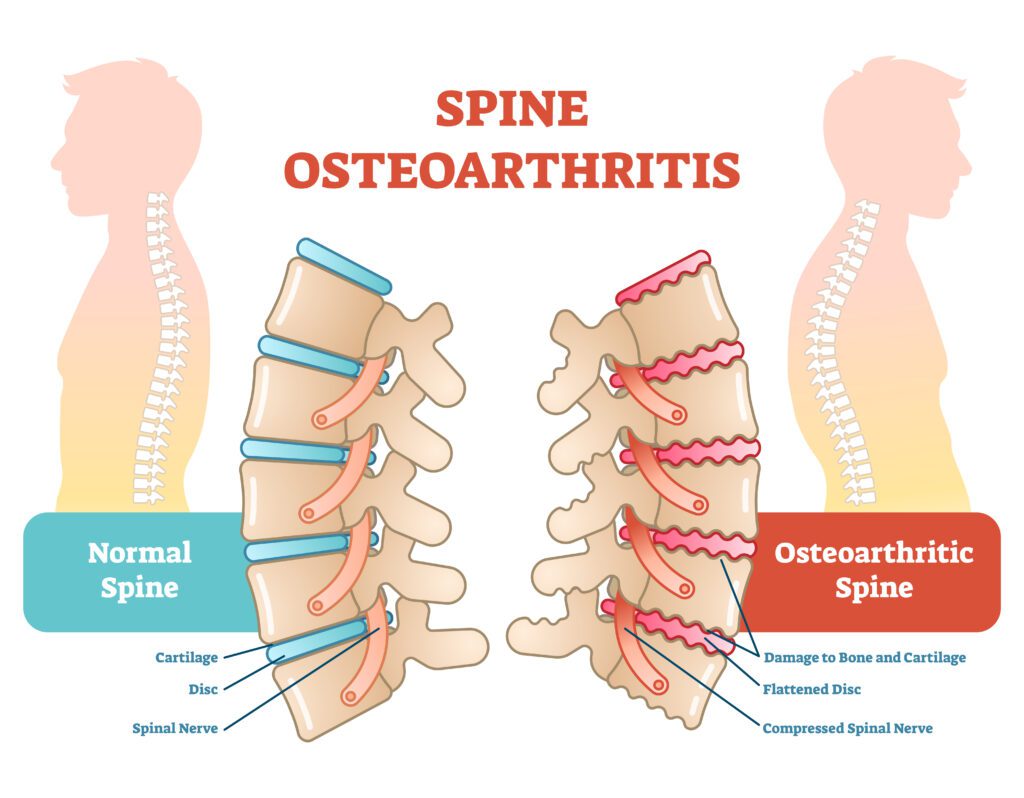
Spinal conditions to include Degenerative Arthritis of the Spine is another common VA claim, which we have at #11.
Osteoarthritis (also called Degenerative Arthritis) is the most common form of arthritis, affecting many veterans.
It occurs when the protective cartilage that cushions the ends of the bones wears down over time.
Although osteoarthritis can damage any joint, the disorder most commonly affects joints in your hands, knees, hips, and spine.
The VA rates Degenerative Arthritis (also known as Degenerative Disc Disease) under CFR Title 38, Part 4, Schedule for Rating Disabilities, DC 5242, Degenerative Arthritis.
VA Ratings for Degenerative Arthritis of the Spine are 10 percent, 20 percent, 30 percent, 40 percent, 50 percent, and 100 percent.
The highest scheduler rating for Degenerative Arthritis of the Spine is 100%, which means your entire spine is frozen in an unfavorable position.
Pro Tip: In accordance with the “Painful Motion” principle, if you have painful motion of your spine, the VA is required to award the minimum compensable rating for the condition, which is 10 percent.
#12. Sleep Apnea
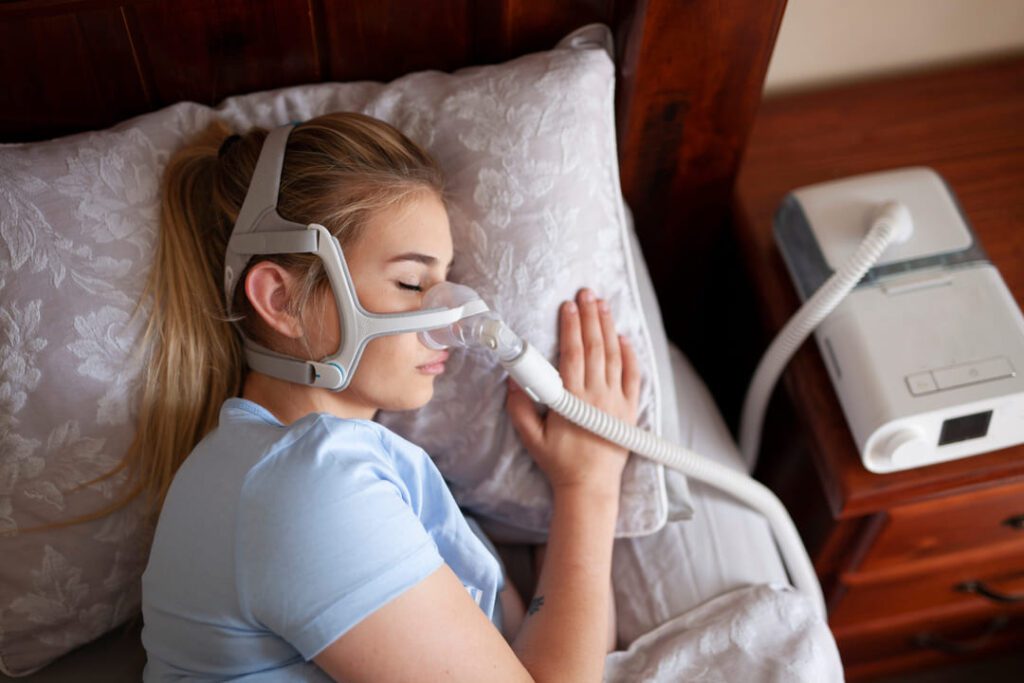
Sleep Apnea is the #12 most claimed VA disability condition.
Sleep Apnea is a serious sleep disorder whereby breathing repeatedly stops and starts (“apneic episodes.”)
If you snore loudly and feel tired even after a night’s sleep, you could have Sleep Apnea.
There are 3 main types of Sleep Apnea (Obstructive Sleep Apnea is the most common type found in veterans):
- Obstructive sleep apnea, the more common form that occurs when throat muscles relax
- Central sleep apnea, which occurs when your brain doesn’t send proper signals to the muscles that control breathing
- Complex sleep apnea syndrome, also known as treatment-emergent central sleep apnea, which occurs when someone has both obstructive sleep apnea and central sleep apnea
The VA rates Sleep Apnea under CFR Title 38, Part 4, Schedule for Rating Disabilities, DC 6847, Sleep Apnea Syndromes (Obstructive, Central, Mixed)
VA disability ratings for Sleep Apnea are 0%, 30%, 50%, and 100%.
If you require the use of a breathing device, such as a CPAP machine, you’ll get a 50 percent rating for Sleep Apnea.
The highest scheduler rating for Sleep Apnea is 100%.
At the 100 percent rating for Sleep Apnea, you have very severe symptoms, including chronic respiratory failure with carbon dioxide retention or cor pulmonale, or; requires tracheostomy.
Click HERE to read a helpful guide about VA claims for sleep apnea.
Pro Tip: If your sleep apnea wasn’t diagnosed in the military or within the first 12 months of leaving service, you’ll almost certainly be denied direct service connection. However, maybe your sleep apnea was caused or made worse by another service connected condition? In that case, you can file for Sleep Apnea Secondary Conditions.
#13. Traumatic Brain Injury (TBI)

Traumatic Brain Injury or TBI is the #13 most common VA disability.
TBI usually results from a violent blow or jolt to the head or body and is especially common in veterans who deployed to Iraq and Afghanistan.
The VA rates TBI under CFR Title 38, Part 4, Schedule for Rating Disabilities, DC 8045, Residuals of Traumatic Brain Injury.
VA Ratings for TBI range from 0 percent to 100 percent, with breaks at 10 percent, 40 percent, and 70 percent.
The highest scheduler rating for TBI is 100 percent, which means “total” impairment in one or more facets, including the three primary categories of Cognitive impairment, Emotional and Behavioral impairment, and/or Physical impairment.
Pro Tip: Symptoms of mental health conditions and symptoms of TBI are virtually the same. This makes it nearly impossible for providers to know which symptoms are attributable to each diagnosis. Thus, you should write a strong Statement in Support of a Claim for TBI and explain the in-service event or injury that led to your brain injury. Make sure to keep the mental health symptoms separate (if you can), especially if you’re already rated for a mental health condition.
#14. Major Depressive Disorder
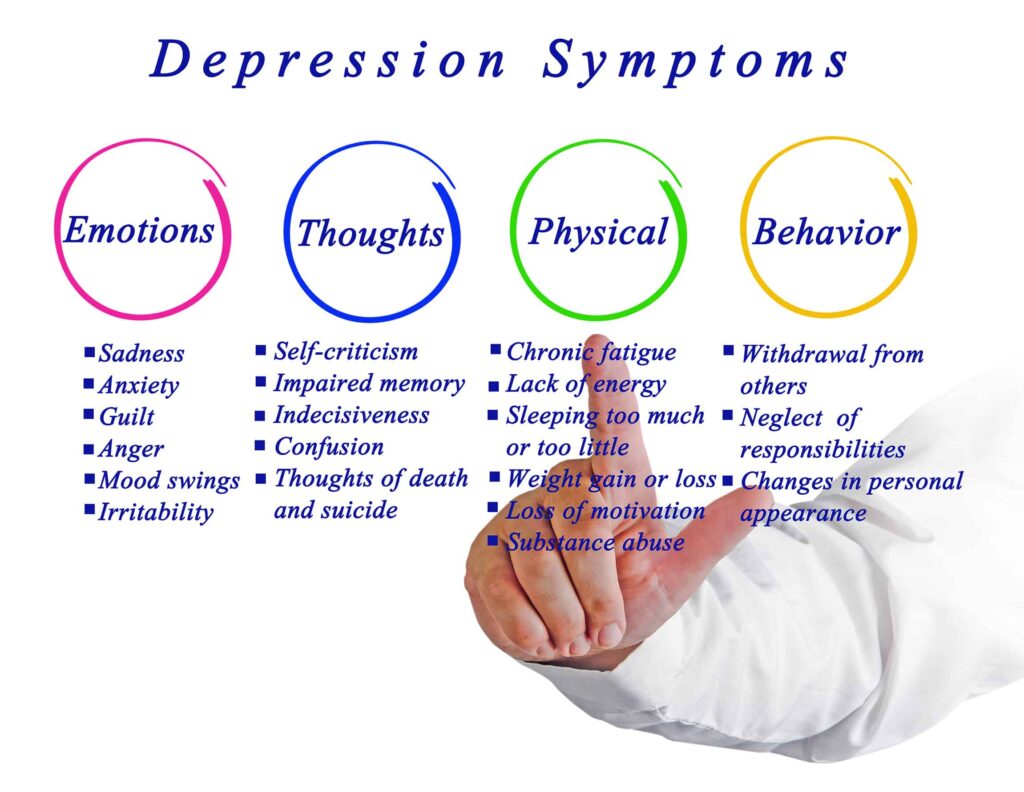
Major Depressive Disorder is the #14 most common VA claim.
Depression is a serious mood disorder that causes a persistent feeling of sadness and loss of interest in activities you once enjoyed.
Also called major depressive disorder or clinical depression, it affects how you feel, think, and behave and can lead to a variety of emotional and physical problems.
You may have trouble doing normal day-to-day activities, and sometimes you may feel as if life isn’t worth living.
The VA rates Depression under CFR Title 38, Part 4, Schedule for Rating Disabilities, DC 9434 Major Depressive Disorder and DC 9435, Unspecified Depressive Disorder.
VA Disability Ratings for Depression range from 0 percent to 100 percent with breaks at 10 percent, 30 percent, 50 percent, and 70 percent.
The average VA rating for Depression is 70 percent.
How does the VA rate Depression?
The VA uses CFR Title 38, Part 4, Schedule for Rating Disabilities, General Rating Formula for Mental Disorders to rate Depression, using the follow scale:
100% VA Rating Criteria for Depression: Total occupational and social impairment.
Symptoms include, but are not limited to:
- Gross impairment in thought processes or communication
- Persistent delusions or hallucinations
- Grossly inappropriate behavior
- Persistent danger of hurting self or others
- Intermittent inability to perform activities of daily living (including maintenance of minimal personal hygiene)
- Disorientation to time or place
- Memory loss for names of close relatives, own occupation, or own name
70%: Occupational and social impairment, with deficiencies in most areas, such as work, school, family relations, judgment, thinking, or mood.
Symptoms of the 70 percent VA rating for Depression include but are not limited to:
- Suicidal ideation
- Obsessive rituals which interfere with routine activities
- Speech intermittently illogical, obscure, or irrelevant
- Near-continuous panic or depression affecting the ability to function independently, appropriately, and effectively
- Impaired impulse control (such as unprovoked irritability with periods of violence)
- Spatial disorientation
- Neglect of personal appearance and hygiene
- Difficulty in adapting to stressful circumstances (including work or a worklike setting)
- Inability to establish and maintain effective relationships
50%: Occupational and social impairment with reduced reliability and productivity.
Symptoms of the 50 percent VA rating for Depression include but are not limited to:
- Flattened affect
- Circumstantial, circumlocutory, or stereotyped speech
- Panic attacks more than once a week
- Difficulty in understanding complex commands
- Impairment of short and long-term memory (e.g., retention of only highly learned material, forgetting to complete tasks)
- Impaired judgment
- Impaired abstract thinking
- Disturbances of motivation and mood
- Difficulty in establishing and maintaining effective work and social relationships
30%: Occupational and social impairment with occasional decrease in work efficiency and intermittent periods of inability to perform occupational tasks (although generally functioning satisfactorily, with routine behavior, self-care, and conversation normal).
The 30 percent rating for Depression has symptoms that include but are not limited to:
- Depressed mood
- Anxiety
- Suspiciousness
- Panic attacks (weekly or less often)
- Chronic sleep impairment
- Mild memory loss (such as forgetting names, directions, recent events)
10%: Occupational and social impairment due to mild or transient symptoms which decrease work efficiency and ability to perform occupational tasks only during periods of significant stress, or symptoms controlled by continuous medication.
The 10 percent VA rating for Depression has very mild symptoms that only flare up during periods of high stress.
0%: A mental condition has been formally diagnosed, but symptoms are not severe enough either to interfere with occupational and social functioning or to require continuous medication.
The 0 percent Depression rating has no symptoms or continues medication keeps your symptoms in-check.
Pro Tip: You should consider getting an independent evaluation for mental health from a private medical provider. Why? If you have a mental health condition, such as Major Depressive Disorder, you’ll get a medical diagnosis, nexus opinion, and documentation of symptoms. You’ll also be better prepared for your C&P exam for mental health conditions. If you need help, we’ll get you squared away with one of our VA Claim Expert Coaches. You’ll also have the option of connecting with private medical providers in our network for reduced rates on Nexus Letters. Learn more about the VA Claims Insider Elite program now.
#15. Asthma
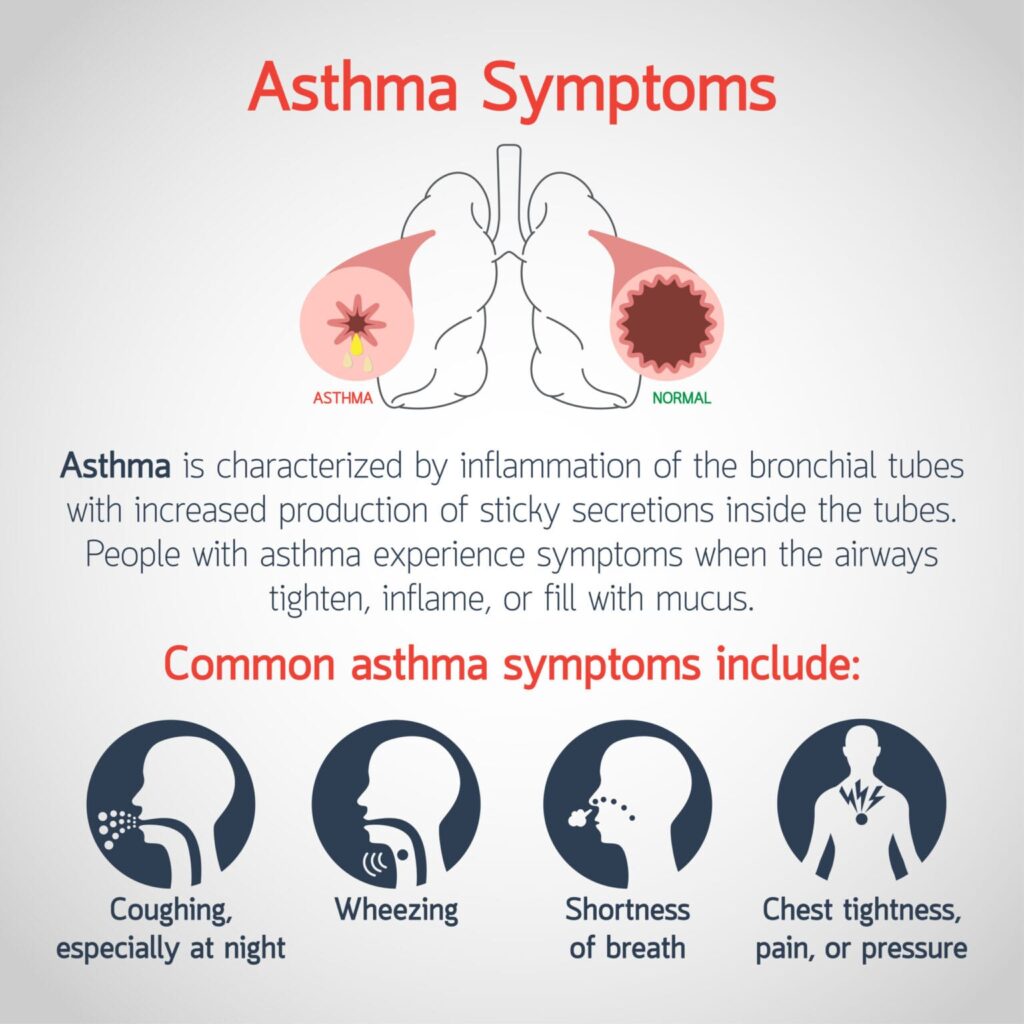
Asthma is the #15 most claimed VA disability.
Asthma is a respiratory condition in which your airways narrow and swell and may produce extra mucus.
This can make it difficult to breathe, and even trigger coughing bouts, such as wheezing and shortness of breath.
The VA rates Asthma as a bronchial disorder under CFR 38, Part 4, VA Schedule of Ratings, Diagnostic Code 6602, Asthma, Bronchial.
The VA ratings for Asthma are 10%, 30%, 60%, and 100%.
The highest scheduler rating for Asthma is 100%, which has very severe symptoms to include: Forced Expiratory Volume-1 less than 40-percent predicted, or; FEV-1/FVC less than 40 percent, or; more than one attack per week with episodes of respiratory failure, or; requires daily use of systemic (oral or parenteral) high dose corticosteroids or immuno-suppressive medications.
Click HERE for a helpful guide to VA disability claims for asthma.
Pro Tip: If your Asthma was not diagnosed in-service, you’ll almost certainly be denied service connection without a Nexus Letter. We can help! Join VA Claims Insider Elite, our premier coaching/consulting company, and get started for FREE today. You’ll have the option to get an independent evaluation and Nexus Letter for Asthma. If we don’t win, you don’t pay. Period.
#16. Diabetes (Type 2)
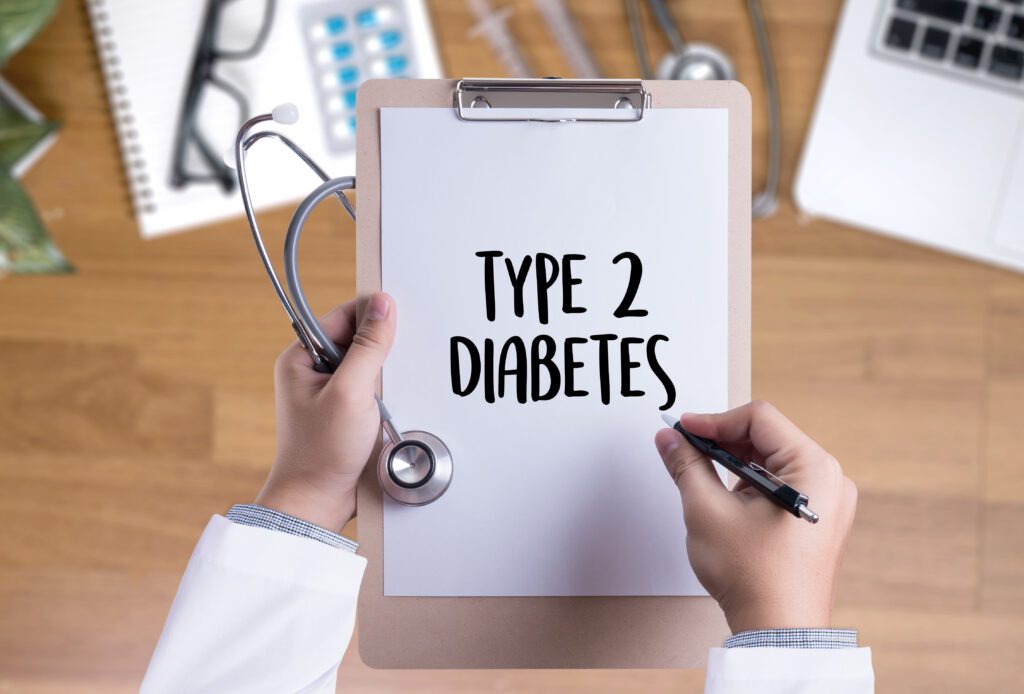
Type 2 Diabetes is the #16 most common VA disability claim.
Type 2 Diabetes is a condition that affects the way the body regulates and uses sugar (glucose) as a fuel.
This long-term (chronic) condition results in too much sugar circulating in the bloodstream.
Eventually, high blood sugar levels can lead to other disorders of the circulatory, nervous, and immune systems.
The VA rates Type 2 Diabetes under CFR Title 38, Part 4, Schedule for Rating Disabilities, DC 7913, Diabetes Mellitus.
The VA ratings for Diabetes (Type 2) are 10%, 20%, 40%, 60%, or 100%.
The highest scheduler rating for Diabetes is 100%.
What are the VA ratings for Diabetes?
- Requiring more than one daily injection of insulin, restricted diet, and regulation of activities (avoidance of strenuous occupational and recreational activities) with episodes of ketoacidosis or hypoglycemic reactions requiring at least three hospitalizations per year or weekly visits to a diabetic care provider, plus either progressive loss of weight and strength or complications that would be compensable if separately evaluated rate at 100 percent.
- Requiring one or more daily injection of insulin, restricted diet, and regulation of activities with episodes of ketoacidosis or hypoglycemic reactions requiring one or two hospitalizations per year or twice a month visits to a diabetic care provider, plus complications that would not be compensable if separately evaluated rate at 60 percent.
- Requiring one or more daily injection of insulin, restricted diet, and regulation of activities rate at 40 percent.
- Requiring one or more daily injection of insulin and restricted diet, or; oral hypoglycemic agent and restricted diet rate at 20 percent.
- Manageable by restricted diet only rate at 10 percent.
Pro Tip: If your Diabetes was not diagnosed in-service, you’ll almost certainly be denied service connection without a Nexus Letter. Need a Nexus Letter? WE CAN HELP. Click HERE to join VA Claims Insider Elite, our premier coaching/consulting company and get started for FREE today. We only win if you win. Veterans Helping Veterans Wordwide™.
#17. Cancer

Cancer-related disabilities are the #17 most common VA claim.
Cancer refers to any one of many diseases characterized by the development of abnormal cells that divide uncontrollably and can infiltrate and destroy normal body tissue.
Cancer is the second-leading cause of death in the world.
The VA rates Cancer under multiple Diagnostic Codes (DC) to include Tumors or Lumps (DC 5328), soft tissue sarcomas (DC 5329), bone cancer (DC 5012), and other muscle cancers (DC 5327), among others.
VA Disability Ratings for Cancer range from 0 percent to 100 percent depending upon the frequency, severity, and duration of symptoms to include any periods of remission.
Many veterans with service-connected cancer obtain a 100% VA disability rating.
VA ratings for cancer will continue so long as your cancer as active, to include 6 months or 12 months after successful treatment or surgery.
Pro Tip: You should consider getting an independent evaluation for cancer from a private medical provider, especially if you think your cancer is due to a toxic or chemical exposure in the military. If you need expert-level help with your VA claim, we’ll get you squared away with one of our VA Claim Expert Coaches. You’ll also have the option of connecting with private medical providers in our network for reduced rates on Nexus Letters. Schedule a FREE no-obligation VA Claim Strategy Call today.
#18. Anxiety Disorders
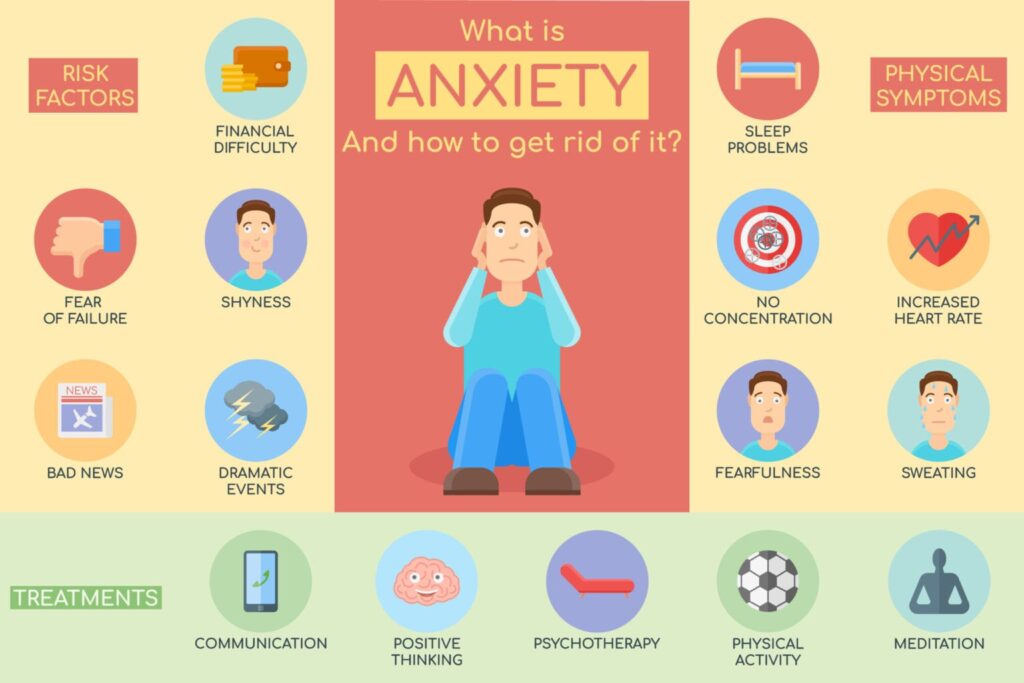
Anxiety Disorders are the #18 most common VA claim.
Veterans with Anxiety Disorders frequently have intense, excessive, and persistent worry and fear about everyday situations.
Anxiety Disorders generally involve repeated episodes and sudden feelings of intense anxiety and fear or terror that reach a peak within minutes (panic attacks).
These feelings of anxiety and panic often interfere with daily activities.
The VA rates Anxiety with multiple Diagnostic Codes (DC) under CFR Title 38, Part 4, Schedule for Rating Disabilities, to include DC 9400, Generalized Anxiety Disorder, DC 9403 Specific Phobia; Social Anxiety Disorder (social phobia), DC 9410, Other Specified Anxiety Disorder, and DC 9413 Unspecified Anxiety Disorder.
VA Disability Ratings for Anxiety range from 0 percent to 100 percent with breaks at 10 percent, 30 percent, 50 percent, and 70 percent.
The average VA rating for anxiety is 70 percent.
The maximum scheduler rating for Anxiety is 100 percent.
What are the Anxiety VA ratings?
The VA uses CFR Title 38, Part 4, Schedule for Rating Disabilities, General Rating Formula for Mental Disorders to rate Anxiety, using the follow scale:
100% VA Rating Criteria for Anxiety: Total occupational and social impairment.
Symptoms include, but are not limited to:
- Gross impairment in thought processes or communication
- Persistent delusions or hallucinations
- Grossly inappropriate behavior
- Persistent danger of hurting self or others
- Intermittent inability to perform activities of daily living (including maintenance of minimal personal hygiene)
- Disorientation to time or place
- Memory loss for names of close relatives, own occupation, or own name
70%: Occupational and social impairment, with deficiencies in most areas, such as work, school, family relations, judgment, thinking, or mood.
Symptoms of the 70 percent VA rating for Anxiety include but are not limited to:
- Suicidal ideation
- Obsessive rituals which interfere with routine activities
- Speech intermittently illogical, obscure, or irrelevant
- Near-continuous panic or depression affecting the ability to function independently, appropriately, and effectively
- Impaired impulse control (such as unprovoked irritability with periods of violence)
- Spatial disorientation
- Neglect of personal appearance and hygiene
- Difficulty in adapting to stressful circumstances (including work or a worklike setting)
- Inability to establish and maintain effective relationships
50%: Occupational and social impairment with reduced reliability and productivity.
Symptoms of the 50 percent VA rating for Anxiety include but are not limited to:
- Flattened affect
- Circumstantial, circumlocutory, or stereotyped speech
- Panic attacks more than once a week
- Difficulty in understanding complex commands
- Impairment of short and long-term memory (e.g., retention of only highly learned material, forgetting to complete tasks)
- Impaired judgment
- Impaired abstract thinking
- Disturbances of motivation and mood
- Difficulty in establishing and maintaining effective work and social relationships
30%: Occupational and social impairment with occasional decrease in work efficiency and intermittent periods of inability to perform occupational tasks (although generally functioning satisfactorily, with routine behavior, self-care, and conversation normal).
The 30 percent rating for Anxiety has symptoms that include but are not limited to:
- Depressed mood
- Anxiety
- Suspiciousness
- Panic attacks (weekly or less often)
- Chronic sleep impairment
- Mild memory loss (such as forgetting names, directions, recent events)
10%: Occupational and social impairment due to mild or transient symptoms which decrease work efficiency and ability to perform occupational tasks only during periods of significant stress, or symptoms controlled by continuous medication.
The 10 percent VA rating for Anxiety has very mild symptoms that only flare up during periods of high stress.
0%: A mental condition has been formally diagnosed, but symptoms are not severe enough either to interfere with occupational and social functioning or to require continuous medication.
The 0 percent Anxiety rating has no symptoms or continues medication keeps your symptoms in-check.
Pro Tip: You should consider getting an independent evaluation for mental health from a private medical provider. Why? If you have a mental health condition, such as an anxiety disorder, you’ll get a medical diagnosis, nexus opinion, and documentation of symptoms. You’ll also be better prepared for your C&P exam for mental health conditions. If you need help, we’ll get you squared away with one of our VA Claim Expert Coaches. You’ll also have the option of connecting with private medical providers in our network for reduced rates on Nexus Letters. Learn more about the VA Claims Insider Elite program now.
#19. Pes Planus (Flat Feet)
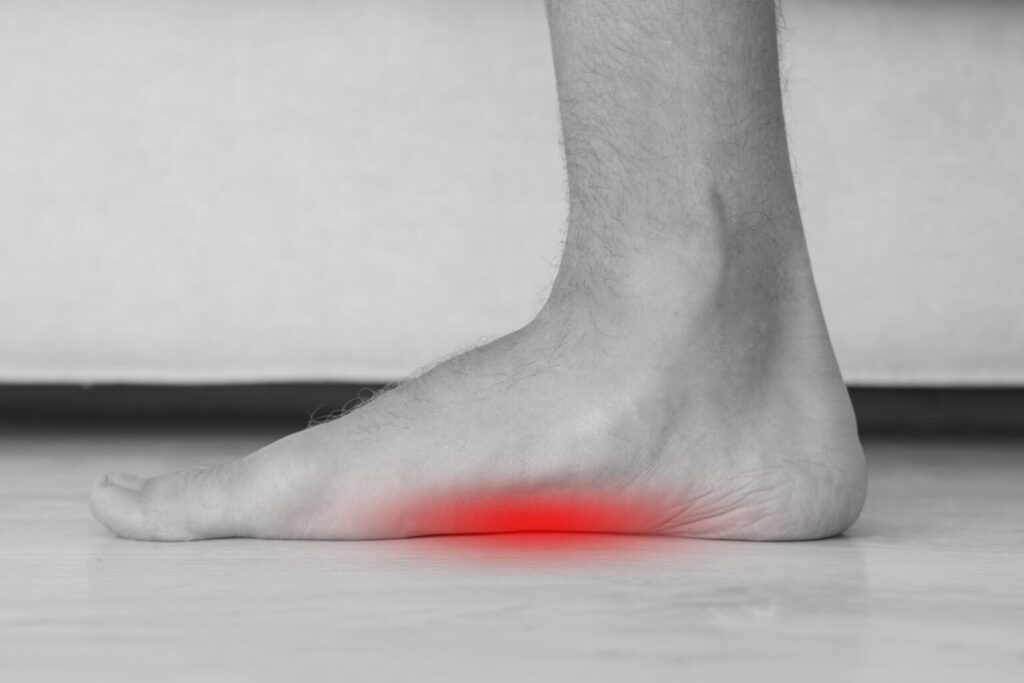
Pes Planus or Flat Feet is the #19 most claimed VA disability.
Flat Feet occurs when the arches on the inside of your feet are flattened, which allow the entire soles of your feet to touch the floor.
The VA rates Flat Feet under CFR Title 38, Part 4, Schedule for Rating Disabilities, DC 5276, Flatfoot, Acquired.
VA Ratings for Pes Planus (Flat Feet) range from 0% to 50% with breaks at 10%, 20%, and 30%.
The maximum scheduler rating for Flat Feet is 50%.
What are the VA disability ratings for Flat Feet?
- Flat Feet Pronounced; marked pronation, extreme tenderness of plantar surfaces of the feet, marked inward displacement and severe spasm of the tendo achillis on manipulation, not improved by orthopedic shoes or appliances: Rate Bilateral at 50% and Unilateral at 30%.
- Flat Feet Severe; objective evidence of marked deformity (pronation, abduction, etc.), pain on manipulation and use accentuated, indication of swelling on use, characteristic callosities: Rate Bilateral at 30% and Unilateral at 20%.
- Flat Feet Moderate; weight-bearing line over or medial to great toe, inward bowing of the tendo achillis, pain on manipulation and use of the feet: Rate Bilateral or Unilateral at 10%.
- Flat Feet Mild; symptoms relieved by built-up shoe or arch support rate at 0%.
Pro Tip: There are three primary to get a VA rating for Flat Feet:
#1: Direct Service Connection for Flat Feet rated either unilateral or bilateral, with VA ratings of 0%, 10%, 20%, 30%, or 50%.
#2: Secondary Service Connection for Flat Feet rated either unilateral or bilateral, with VA ratings of 0%, 10%, 20%, 30%, or 50%. For instance, a veteran could be rated for Flat Feet secondary to Ankle Pain.
#3: Aggravation of a Pre-Service Disability for Flat Feet rated either unilateral or bilateral, with VA ratings of 0%, 10%, 20%, 30%, or 50%. For example, a veteran could be rated for Flat Feet due to aggravation of a pre-service disability. This means you had the condition before you joined the military, but your military service aggravated your flat feet beyond their natural progression.
#20. Radiculopathy
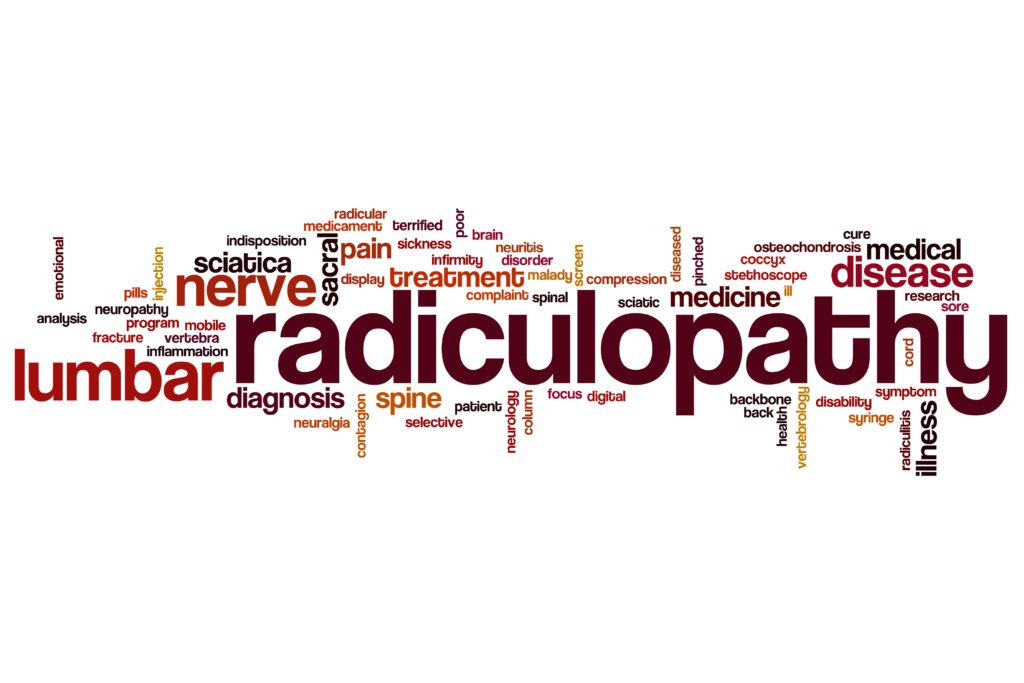
We have Radiculopathy as the #20 most claimed VA disability, which rounds out the Top 20 VA Disability Claims.
Radiculopathy is a painful condition that results from nerve roots in your spine becoming pinched or damaged.
The VA rates Radiculopathy most often rated under CFR 38, Part 4, VA Schedule of Ratings, diagnostic codes 8510, 8610, and 8710 for the upper and middle radicular groups.
VA Disability Ratings for Radiculopathy range from 0% to 90% and depend upon the Frequency, Severity, and Duration of your symptoms, meaning the more severe your symptoms, the higher the VA rating for Radiculopathy.
The maximum scheduler rating for Radiculopathy is 90 percent, which means you have complete paralysis of all radicular groups.
Pro Tip: Many veterans suffer from various service connected back conditions, which can affect your upper back, middle back, and/or lower back.
For example, the following codes from 38 CFR, Part 4, Schedule for Rating Disabilities apply:
- DC 5237: Lumbosacral or cervical strain—a generic label for back pain
- DC 5238: Spinal stenosis—the spinal column narrows and presses on the spinal cord or nerves
- DC 5239: Spondylolisthesis or segmental instability—when a vertebra slips out of position
- DC 5240: Ankylosing spondylitis—an arthritic disease that causes the spinal joints to freeze in place
- DC 5241: Spinal fusion—the vertebrae are surgically fused together
- DC 5235: Vertebral fracture or dislocation—the bones of the spine break or slip out of alignment due to a traumatic event like a car accident. Any generic spinal bone injury would be coded here.
These six back conditions can often lead to pinched or damaged nerve roots, which can cause significant pain known as Radiculopathy.
Radiculopathy is commonly rated as a secondary VA disability claim for secondary service connection due to one or more service-connected back conditions.
Note that a veteran is eligible to be rated for both a back condition, and Radiculopathy secondary to lower back pain.
#21. Chronic Adjustment Disorder

Chronic Adjustment Disorder is the #21 most common VA disability claim.
Adjustment Disorders are stress-related conditions that can be caused by your military service.
Work problems, long deployments, separations or divorce, an illness, death of a close family member, or any number of life changes can lead to adjustment disorders.
If you have an adjustment disorder, you continue to have emotional or behavioral reactions that can contribute to feeling anxious or depressed.
The VA rates Chronic Adjustment Disorder under CFR Title 38, Part 4, Schedule for Rating Disabilities, DC 9440, Chronic Adjustment Disorder.
VA Ratings for Chronic Adjustment Disorder range from 0 percent to 100 percent with breaks at 10 percent, 30 percent, 50 percent, and 70 percent.
The average VA rating for Chronic Adjustment Disorder is 70 percent.
The highest scheduler VA rating for Chronic Adjustment Disorder is 100 percent.
How does the VA rate Adjustment Disorders?
The VA uses CFR Title 38, Part 4, Schedule for Rating Disabilities, General Rating Formula for Mental Disorders to rate Adjustment Disorders.
100% VA Rating Criteria for Adjustment Disorder: Total occupational and social impairment.
Symptoms include, but are not limited to:
- Gross impairment in thought processes or communication
- Persistent delusions or hallucinations
- Grossly inappropriate behavior
- Persistent danger of hurting self or others
- Intermittent inability to perform activities of daily living (including maintenance of minimal personal hygiene)
- Disorientation to time or place
- Memory loss for names of close relatives, own occupation, or own name
70%: Occupational and social impairment, with deficiencies in most areas, such as work, school, family relations, judgment, thinking, or mood.
Symptoms of the 70 percent VA rating for Adjustment Disorder include but are not limited to:
- Suicidal ideation
- Obsessive rituals which interfere with routine activities
- Speech intermittently illogical, obscure, or irrelevant
- Near-continuous panic or depression affecting the ability to function independently, appropriately, and effectively
- Impaired impulse control (such as unprovoked irritability with periods of violence)
- Spatial disorientation
- Neglect of personal appearance and hygiene
- Difficulty in adapting to stressful circumstances (including work or a worklike setting)
- Inability to establish and maintain effective relationships
50%: Occupational and social impairment with reduced reliability and productivity.
Symptoms of the 50 percent VA rating for Adjustment Disorder include but are not limited to:
- Flattened affect
- Circumstantial, circumlocutory, or stereotyped speech
- Panic attacks more than once a week
- Difficulty in understanding complex commands
- Impairment of short and long-term memory (e.g., retention of only highly learned material, forgetting to complete tasks)
- Impaired judgment
- Impaired abstract thinking
- Disturbances of motivation and mood
- Difficulty in establishing and maintaining effective work and social relationships
30%: Occupational and social impairment with occasional decrease in work efficiency and intermittent periods of inability to perform occupational tasks (although generally functioning satisfactorily, with routine behavior, self-care, and conversation normal).
The 30 percent rating for Adjustment Disorder has symptoms that include but are not limited to:
- Depressed mood
- Anxiety
- Suspiciousness
- Panic attacks (weekly or less often)
- Chronic sleep impairment
- Mild memory loss (such as forgetting names, directions, recent events)
10%: Occupational and social impairment due to mild or transient symptoms which decrease work efficiency and ability to perform occupational tasks only during periods of significant stress, or symptoms controlled by continuous medication.
The 10 percent VA rating for Adjustment Disorder has very mild symptoms that only flare up during periods of high stress.
0%: A mental condition has been formally diagnosed, but symptoms are not severe enough either to interfere with occupational and social functioning or to require continuous medication.
The 0 percent Adjustment Disorder rating has no symptoms or continues medication keeps your symptoms in-check.
Pro Tip: You should consider getting an independent evaluation for mental health from a private medical provider. Why? If you have a mental health condition, such as Chronic Adjustment Disorder, you’ll get a medical diagnosis, nexus opinion, and documentation of symptoms. You’ll also be better prepared for your C&P exam for mental health conditions. If you need help, we’ll get you squared away with one of our VA Claim Expert Coaches. You’ll also have the option of connecting with private medical providers in our network for reduced rates on Nexus Letters. Learn more about the VA Claims Insider Elite program now.
#22. Somatic Symptom Disorder (Chronic Pain Syndrome)

Somatic Symptom Disorder, more commonly known as Chronic Pain Syndrome with Depression and Anxiety, is the #22 most common VA disability claim.
Somatic Symptom Disorder is characterized by an extreme focus on physical symptoms, such as chronic pain, that causes major emotional distress, anxiety, depression, and problems functioning.
The VA rates Somatic Symptom Disorder using multiple Diagnostic Codes (DC) under CFR Title 38, Part 4, Schedule for Rating Disabilities, DC 9421 Somatic Symptom Disorder, DC 9422 Other Specified Somatic Symptom and Related Disorder, and DC 9423 Unspecified Somatic Symptom and Related Disorder.
VA Ratings for Somatic Symptom Disorder range from 0 percent to 100 percent with breaks at 10 percent, 30 percent, 50 percent, and 70 percent.
The average VA rating for Somatic Symptom Disorder is 70 percent.
The highest scheduler VA rating for Somatic Symptom Disorder is 100 percent.
What are the VA ratings for Somatic Symptom Disorder?
The VA uses CFR Title 38, Part 4, Schedule for Rating Disabilities, General Rating Formula for Mental Disorders to rate Somatic Symptom Disorder (it’s a mental health condition).
100% VA Rating Criteria for Somatic Symptom Disorder: Total occupational and social impairment.
Symptoms include, but are not limited to:
- Gross impairment in thought processes or communication
- Persistent delusions or hallucinations
- Grossly inappropriate behavior
- Persistent danger of hurting self or others
- Intermittent inability to perform activities of daily living (including maintenance of minimal personal hygiene)
- Disorientation to time or place
- Memory loss for names of close relatives, own occupation, or own name
70%: Occupational and social impairment, with deficiencies in most areas, such as work, school, family relations, judgment, thinking, or mood.
Symptoms of the 70 percent VA rating for Somatic Symptom Disorder include but are not limited to:
- Suicidal ideation
- Obsessive rituals which interfere with routine activities
- Speech intermittently illogical, obscure, or irrelevant
- Near-continuous panic or depression affecting the ability to function independently, appropriately, and effectively
- Impaired impulse control (such as unprovoked irritability with periods of violence)
- Spatial disorientation
- Neglect of personal appearance and hygiene
- Difficulty in adapting to stressful circumstances (including work or a worklike setting)
- Inability to establish and maintain effective relationships
50% VA Rating for Somatic Symptom Disorder: Occupational and social impairment with reduced reliability and productivity.
Symptoms of the 50 percent VA rating for Somatic Symptom Disorder include but are not limited to:
- Flattened affect
- Circumstantial, circumlocutory, or stereotyped speech
- Panic attacks more than once a week
- Difficulty in understanding complex commands
- Impairment of short and long-term memory (e.g., retention of only highly learned material, forgetting to complete tasks)
- Impaired judgment
- Impaired abstract thinking
- Disturbances of motivation and mood
- Difficulty in establishing and maintaining effective work and social relationships
30%: Occupational and social impairment with occasional decrease in work efficiency and intermittent periods of inability to perform occupational tasks (although generally functioning satisfactorily, with routine behavior, self-care, and conversation normal).
The 30 percent rating for Somatic Symptom Disorder has symptoms that include but are not limited to:
- Depressed mood
- Anxiety
- Suspiciousness
- Panic attacks (weekly or less often)
- Chronic sleep impairment
- Mild memory loss (such as forgetting names, directions, recent events)
10%: Occupational and social impairment due to mild or transient symptoms which decrease work efficiency and ability to perform occupational tasks only during periods of significant stress, or symptoms controlled by continuous medication.
The 10 percent VA rating for Somatic Symptom Disorder has very mild symptoms that only flare up during periods of high stress.
0%: A mental condition has been formally diagnosed, but symptoms are not severe enough either to interfere with occupational and social functioning or to require continuous medication.
The 0 percent Somatic Symptom Disorder rating has no symptoms or continues medication keeps your symptoms in-check.
Pro Tip: You should consider getting an independent evaluation for mental health from a private medical provider. Why? If you have a mental health condition, such as Somatic Symptom Disorder, you’ll get a medical diagnosis, nexus opinion, and documentation of symptoms. You’ll also be better prepared for your C&P exam for mental health conditions. If you need help, we’ll get you squared away with one of our VA Claim Expert Coaches. You’ll also have the option of connecting with private medical providers in our network for reduced rates on Nexus Letters. Learn more about the VA Claims Insider Elite program now.
#23. Gastroesophageal Reflex Disease (GERD)
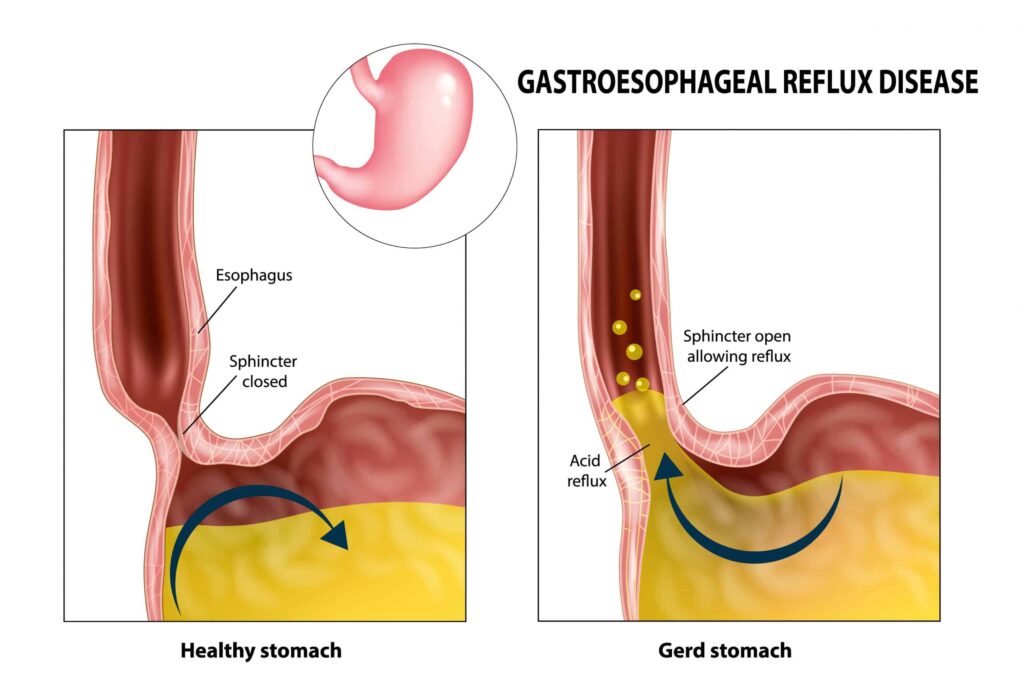
GERD is the #23 most common VA disability.
Gastroesophageal Reflux Disease (GERD) occurs when stomach acid frequently flows back into the tube connecting your mouth and stomach, leading to painful acid reflux.
The VA rates GERD as a digestive disability by analogy to hiatal hernia under 38 CFR § 4.114, DC 7346, as that code is normally used to rate GERD due to similarity of symptoms.
VA ratings for GERD are 10%, 30%, or 60%.
What are the VA disability ratings for GERD?
- GERD with symptoms of pain, vomiting, material weight loss and hematemesis or melena with moderate anemia; or other symptom combinations productive of severe impairment of health rate at 60%.
- GERD with persistently recurrent epigastric distress with dysphagia, pyrosis, and regurgitation, accompanied by substernal or arm or shoulder pain, productive of considerable impairment of health rate at 30%.
- GERD with two or more of the symptoms for the 30% evaluation of less severity rate at 10%.
Pro Tip: Many veterans with GERD or acid reflux, especially those who were diagnosed long after leaving the military are eligible under the law for GERD secondary to PTSD. For example, if veterans are taking SSRIs to help manage their PTSD symptoms, perhaps you’re suffering from side effects of those SSRI medications, which can lead to digestive system issues. Thus, veterans can get a GERD VA rating secondary to PTSD. It’s highly recommended that you get a Nexus Letter for GERD Secondary to PTSD.
#24. Irritable Bowel Syndrome (IBS)

IBS is the #24 most claimed VA disability.
Irritable Bowel Syndrome (IBS) is a common disorder that affects the large intestine, leading to cramping, abdominal pain, bloating, gas, and diarrhea or constipation.
There is no separate Diagnostic Code (DC) for IBS, so it’s most assigned a VA rating analogous to DC 7319, Irritable Colon Syndrome:
VA Ratings for IBS range from 0% to 30%, with an interim break at 10%.
A veterans final VA disability rating for IBS depends upon the frequency, severity, and duration of your symptoms, meaning, the more severe your symptoms, the higher the VA rating for IBS.
What are the VA ratings for IBS?
- Severe IBS; diarrhea, or alternating diarrhea and constipation, with constant abdominal distress rate at 30%.
- Moderate IBS; frequent episodes of bowel disturbance with abdominal distress rate at 10%.
- Mild IBS; disturbances of bowel function with occasional episodes of abdominal distress rate at 0%.
Pro Tip: For VA purposes, a veteran shall NOT have a VA disability rating for both GERD and IBS at the same time. Why? Because of the legal concept of “Avoidance of Pyramiding” (aka, stacking similar disabilities and various diagnoses on top of each other is to be avoided). In accordance with 38 CFR § 4.114 – Schedule of Ratings – Digestive System, VA disability ratings under diagnostic codes 7301 to 7329, inclusive, 7331, 7342, and 7345 to 7348 inclusive will NOT be combined with each other. A single evaluation will be assigned under the diagnostic code which reflects the predominant disability picture, with elevation to the next higher evaluation where the severity of the overall disability warrants such elevation.
#25. Erectile Dysfunction (ED)
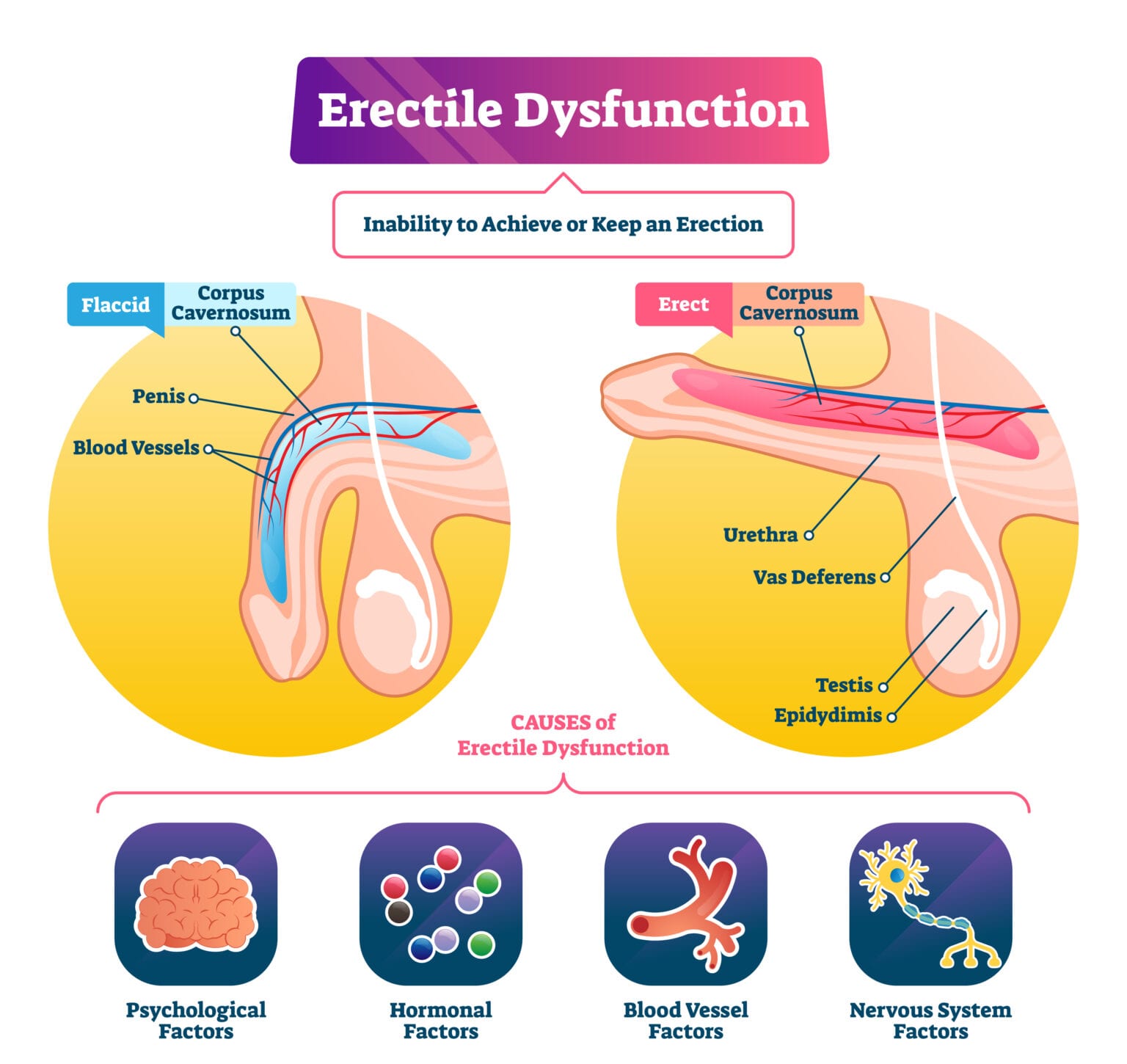
Erectile Dysfunction (ED) is the #25 most claimed VA disability.
Erectile Dysfunction is characterized as the inability to get and keep an erection firm enough for sex.
There is no separate Diagnostic Code (DC) for ED; however, it’s most commonly assigned a 0% service-connected VA rating under Special Monthly Compensation (SMC) Category (K) or SMC-K, for “Loss of Use of a Creative Organ.”
Veteran’s with a 0% rating for Erectile Dysfunction qualify for SMC-K and will get an additional $118.33 per month added to their total monthly VA disability compensation payment.
Click HERE for a helpful guide on VA Ratings for ED.
While ED is assigned a 0% rating under SMC-K, there are five other scheduler rating categories that are related to Erectile Dysfunction, the penis, and testicles, which are rated as follows:
DC 7520: If half or more of the penis is removed, then it is rated 30%. This condition can also be rated under the urinary rating system if that can result in a higher rating than 30%.
DC 7521: If the Glans is removed, it is rated 20%. This condition can also be rated under the urinary rating system if that can result in a higher rating than 20%.
DC 7522: If the penis is deformed and cannot erect, then it is rated 20%. The following two requirements must be met before a 20% evaluation can be assigned for deformity of the penis with loss of erectile power under 38 CFR 4.115b, DC 7522:
- The deformity must be evident, AND
- The deformity must be accompanied by loss of erectile power.
DC 7523: Atrophy of the testicles is when they shrink and become nonfunctional. If one testicle is atrophied, then it is rated 0%. If both testicles are atrophied, then it is rated 20%.
DC 7524: If both testicles are removed, it is rated 30%. If only one testicle is removed, it is rated 0%. There are a few conditions for this code. If the testicle was removed because it was not fully developed or did not descend, then it is not ratable since this is a pre-existing condition and not directly related to military service. If the testicle had to be removed because of an injury or condition that is related to military service, and the remaining testicle is not functioning (whether it is related to service), it is rated 30%.
Pro Tip: Plenty of medical research studies point to the prevalence of Erectile Dysfunction (ED) in veterans with Post Traumatic Stress Disorder (PTSD). In fact, veterans with PTSD experience higher rates of sexual dysfunction. A review study published by the Journal of Sexual Medicine in February 2015 found that male Veterans with PTSD were significantly more likely than their civilian counterparts to report erectile dysfunction or other sexual problems.
In another study of male combat veterans diagnosed with PTSD, 85% reported erectile dysfunction, compared with a 22% rate among male combat veterans without any mental health diagnosis. PTSD involves anxiety, stress, and often, interpersonal communication problems and depression. Antidepressants and anti-anxiety drugs, which may be prescribed for veterans who develop PTSD symptoms, can cause erectile dysfunction, as can other medications. Thus, you can get service-connected for ED Secondary to PTSD.
#26. Plantar Fasciitis (Heel Pain)
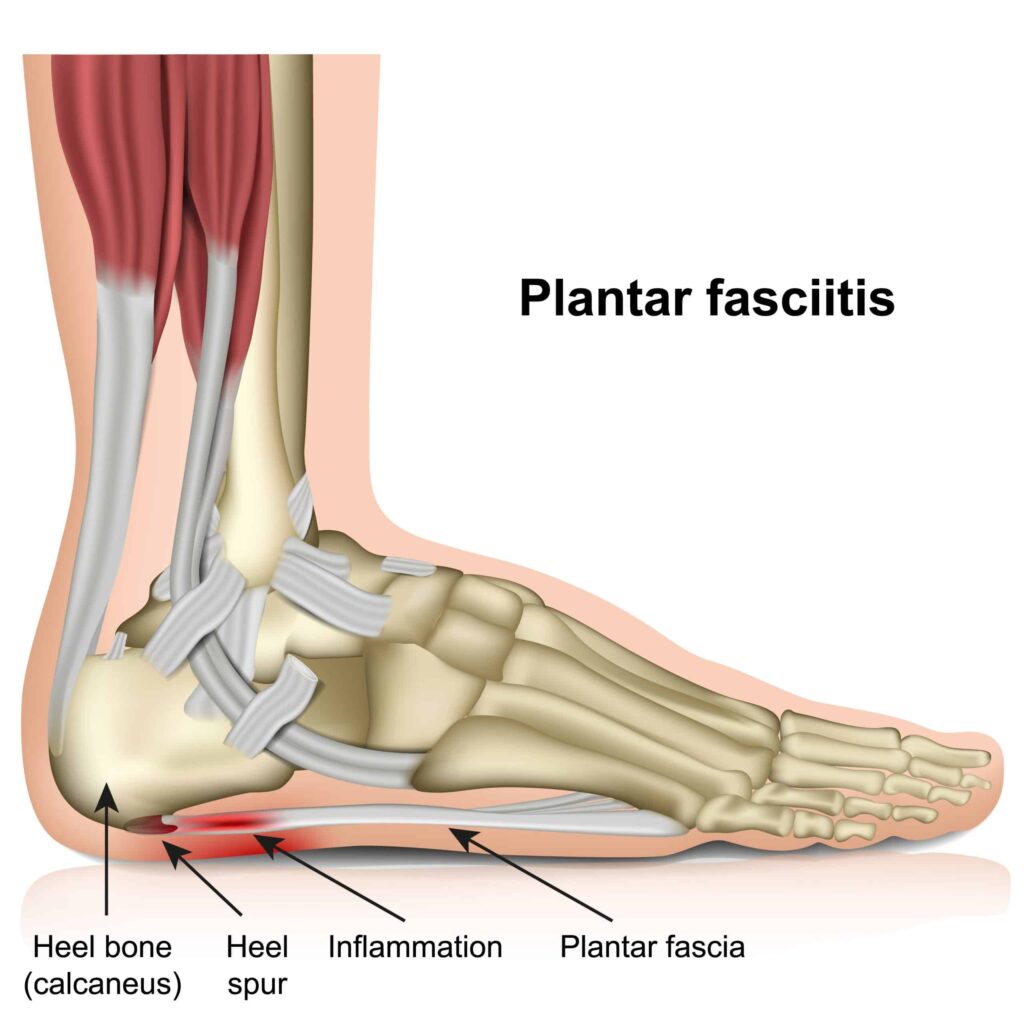
Plantar Fasciitis, or heel pain, is the #26 most common VA claim.
Plantar Fasciitis is a painful condition caused by inflammation of the thick band of tissue (the Plantar Fascia) at the bottom of your foot that runs from your heel to your toes.
Effective February 7, 2021, Plantar Fasciitis has its own Diagnostic Code (DC) 5269 with VA Ratings for Plantar Fasciitis that range from 10% to 30% with a break at 20%.
The highest possible scheduler rating for bilateral Plantar Fasciitis is now 30% (not 50%), which includes symptoms such as, no relief from both non-surgical (orthopedic shoes or appliances) and surgical treatment.
However, if the veteran has actual loss of use of the foot, the rating is 40%.
What are the VA disability ratings for Plantar Fasciitis?
- Plantar Fasciitis with no relief from both non-surgical and surgical treatment, bilateral, rate at 30%.
- Plantar Fasciitis with no relief from both non-surgical and surgical treatment, unilateral, rate at 20%.
- Plantar Fasciitis that’s less severe, either unilateral or bilateral, rate at 10%.
Pro Tip: Some veterans with Plantar Fasciitis, especially those who were diagnosed long after leaving the military, might still be eligible if medical evidence shows your heel pain is proximately due to or aggravated by another service-connected disability such as knee strain, hip conditions, and/or back conditions. You’ll want to get a Nexus Letter for Plantar Fasciitis as a Secondary Condition.
#27. Arthritis (Various)
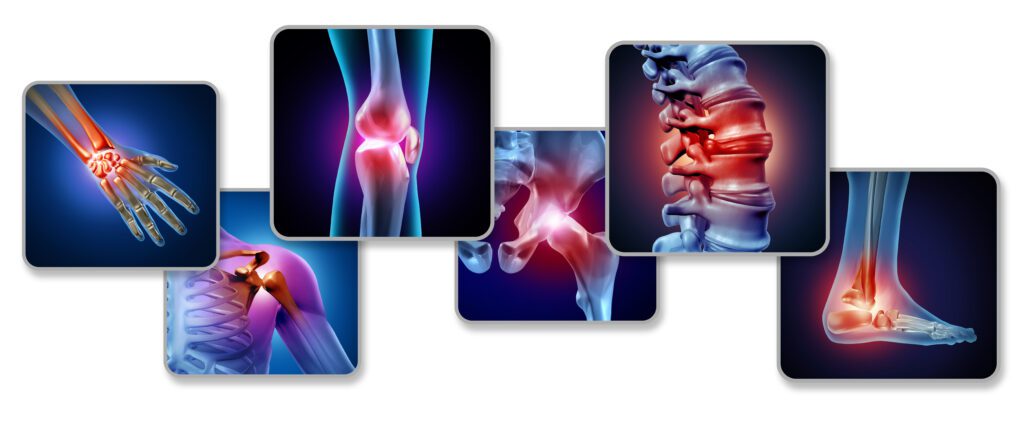
Various forms of Arthritis are another common VA claim, which we have at #27.
Arthritis is the swelling and tenderness of one or more joints.
The main symptoms of arthritis are joint pain and stiffness, which typically worsen with age.
The VA rates Arthritis with multiple Diagnostic Codes (DC) under CFR Title 38, Part 4, Schedule for Rating Disabilities, but most often using DC 5002 Multi-Joint Arthritis, DC 5003 Degenerative Arthritis, other than post-traumatic, DC 5010 Traumatic Arthritis, and DC 5242 Degenerative Arthritis.
VA Disability Ratings for Arthritis are 10 percent, 20 percent, 30 percent, 40 percent, 50 percent, and 100 percent.
The highest scheduler rating for Arthritis is 100 percent—meaning your entire spine is frozen in an unfavorable position.
Pro Tip: In accordance with the “Painful Motion” principle, if your Arthritis causes you to have painful motion of the spine, the VA is required to award the minimum compensable rating for the condition, which is 10 percent.
#28. Hypertension (High Blood Pressure)
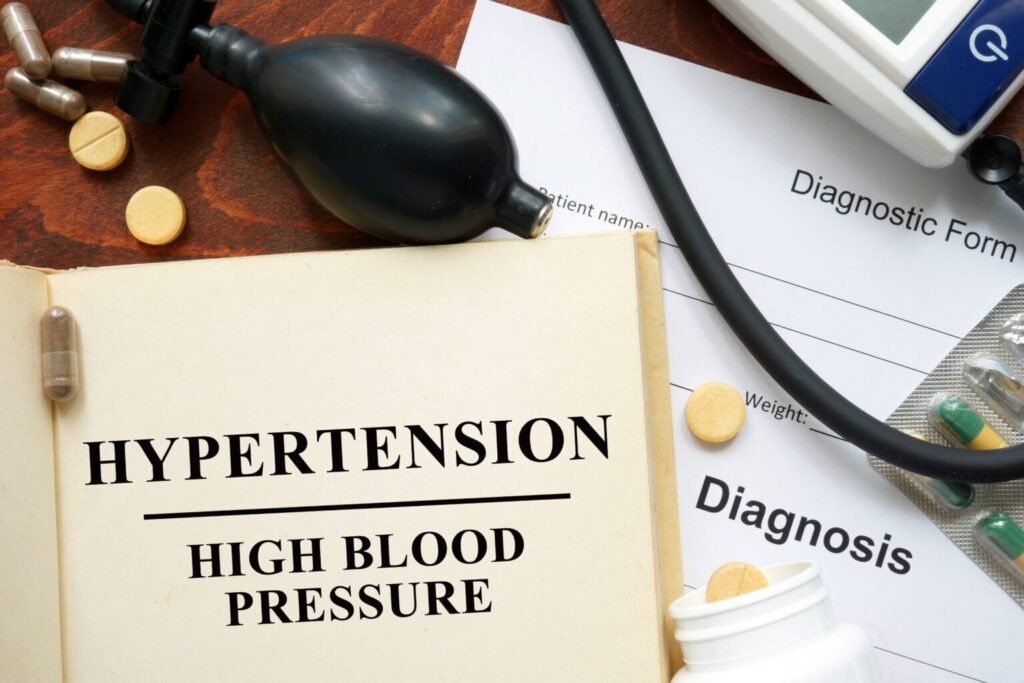
Hypertension or more commonly known as High Blood Pressure is the #28 most claimed VA disability.
High Blood Pressure is a common condition in veterans whereby the long-term force of the blood against your artery walls is too high, which can cause health problems such as heart disease.
Blood pressure is determined both by the amount of blood your heart pumps and the amount of resistance to blood flow in your arteries.
The more blood your heart pumps and the narrower your arteries, the higher your blood pressure.
A blood pressure reading is given in millimeters of mercury (mm Hg) and has two numbers:
- Top number (systolic pressure). The first, or upper, number measures the pressure in your arteries when your heart beats.
- Bottom number (diastolic pressure). The second, or lower, number measures the pressure in your arteries between beats.
The VA rates Hypertension under CFR Title 38, Part 4, Schedule for Rating Disabilities, DC 7101 Hypertensive Vascular Disease (hypertension and isolated systolic hypertension).
A veteran’s disability for Hypertension can be rated at 10%, 20%, 40%, or 60% depending on the severity of your symptoms.
What are the VA disability ratings for High Blood Pressure?
- 60% rating for hypertension is warranted if your diastolic pressure measures 130 or higher.
- 40% rating for hypertension: If your diastolic pressure is 120 to 129.
- 20% rating for hypertension: If your diastolic pressure is 110 to 119, or your systolic pressure is 200 or higher.
- 10% VA rating for hypertension: If your diastolic pressure is 100 to 109, or your systolic pressure is 160 to 199.
Pro Tip: You might have Hypertension secondary to Sleep Apnea. You’ll need to get a Nexus Letter to support the connection between Hypertension and Sleep Apnea. The American Heart Association (AHA) has said that as many as 50% of all patients with sleep apnea may have underlying hypertension, and many patients with hypertension, particularly resistant hypertension, may also have OSA. According to medical research, Obstructive Sleep Apnea (OSA) is a recognized cause of hypertension (high blood pressure).
Apneic episodes (when you stop breathing) from Sleep Apnea produce surges in systolic and diastolic pressure that keep mean blood pressure levels elevated at night. In addition, the American Academy of Sleep Medicine recently released new guidelines that describe Obstructive Sleep Apnea as a “relatively fixed” cardiovascular disease risk factor in patients with hypertension.
It lists Obstructive Sleep Apnea as a CAUSE of secondary hypertension, with resistant hypertension being one of the clinical indications. Here’s a recent BVA decision where a veteran got service connected for Hypertension secondary to Sleep Apnea.
#29. Degenerative Disc Disease (DDD)
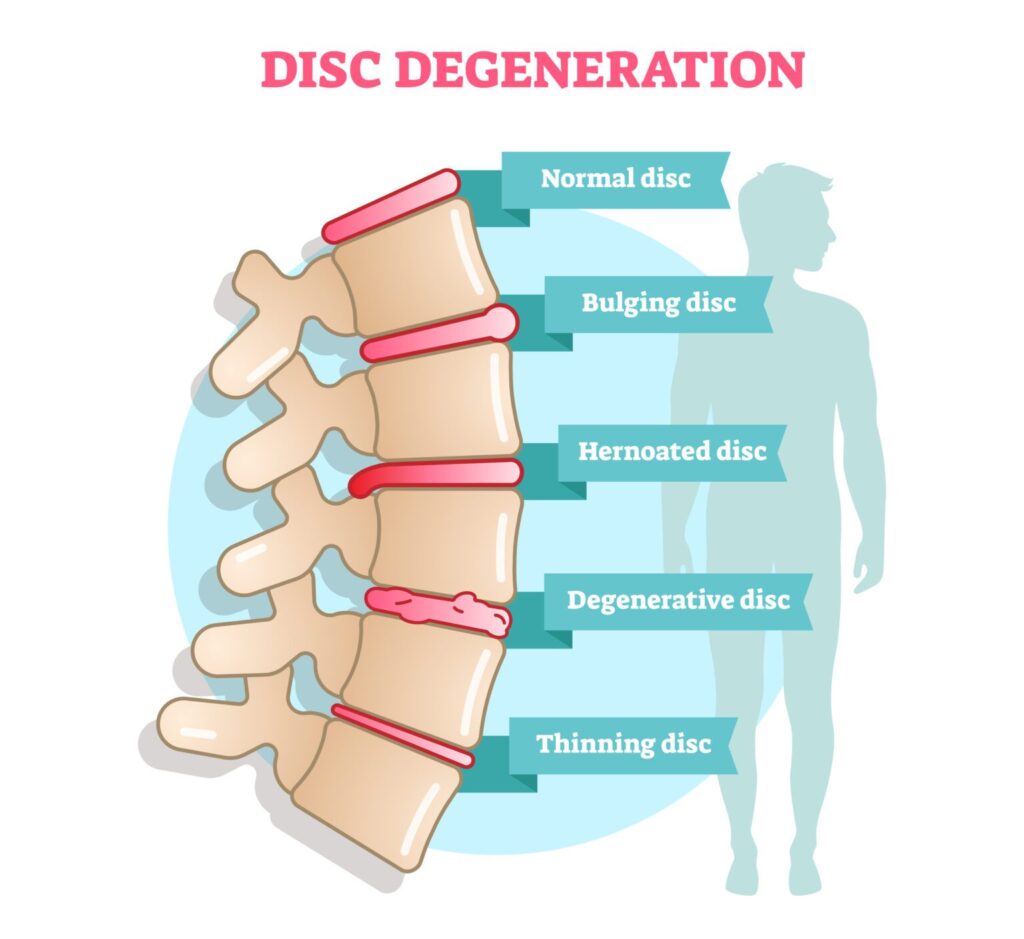
Degenerative Disc Disease or DDD is the #29 top VA disability claim.
Degenerative Disc Disease is a painful spinal disorder caused by the steady degeneration of the intervertebral discs, which are the pads that cushion the bones in the vertebrae of your spine.
With age or trauma, the intervertebral discs lose their water content, leaving the discs more prone to tearing or damage.
Water loss and disc damage gradually leads to thinner and weaker discs that cannot effectively cushion the vertebrae.
Thinner and weaker discs often lead to back pain, muscle weakness, and pinched nerves.
Degenerative Disc Disease is one of the most common causes of low back (lumbar), mid back (thoracic), and neck pain (cervical) in veterans.
In more severe cases, Degenerative Disc Disease can cause weakness, numbness, and shooting or throbbing pain in the arms or legs, which is a painful condition known as Radiculopathy.
The VA rates Degenerative Disc Disease as a “spinal disorder” under CFR Title 38, Part 4, VA Schedule of Ratings, Diagnostic Code 5242, Degenerative Arthritis, Degenerative Disc Disease Other Than Intervertebral Disc Syndrome.
A veteran’s final VA Rating for Degenerative Disc Disease can be rated at 10%, 20%, 30%, 40%, 50%, or 100%.
What are the VA ratings for Degenerative Disc Disease?
- Unfavorable ankylosis of the entire spine rate at 100%
- Unfavorable ankylosis of the entire thoracolumbar spine rate at 50%
- Unfavorable ankylosis of the entire cervical spine; or forward flexion of the thoracolumbar spine 30 degrees or less; or favorable ankylosis of the entire thoracolumbar spine rate at 40%
- Forward flexion of the cervical spine 15 degrees or less; or favorable ankylosis of the entire cervical spine rate at 30%
- Forward flexion of the thoracolumbar spine greater than 30 degrees but not greater than 60 degrees; or, forward flexion of the cervical spine greater than 15 degrees but not greater than 30 degrees; or, the combined range of motion of the thoracolumbar spine not greater than 120 degrees; or, the combined range of motion of the cervical spine not greater than 170 degrees; or, muscle spasm or guarding severe enough to result in an abnormal gait or abnormal spinal contour such as scoliosis, reversed lordosis, or abnormal kyphosis rate at 20%
- Forward flexion of the thoracolumbar spine greater than 60 degrees but not greater than 85 degrees; or, forward flexion of the cervical spine greater than 30 degrees but not greater than 40 degrees; or, combined range of motion of the thoracolumbar spine greater than 120 degrees but not greater than 235 degrees; or, combined range of motion of the cervical spine greater than 170 degrees but not greater than 335 degrees; or, muscle spasm, guarding, or localized tenderness not resulting in abnormal gait or abnormal spinal contour; or, vertebral body fracture with loss of 50 percent or more of the height rate at 10%
Pro Tip: In accordance with the “Painful Motion” principle, if your DDD causes you to have painful motion of the spine, the VA is required to award the minimum compensable rating for the condition, which is 10 percent.
#30. Carpal Tunnel Syndrome (CTS)
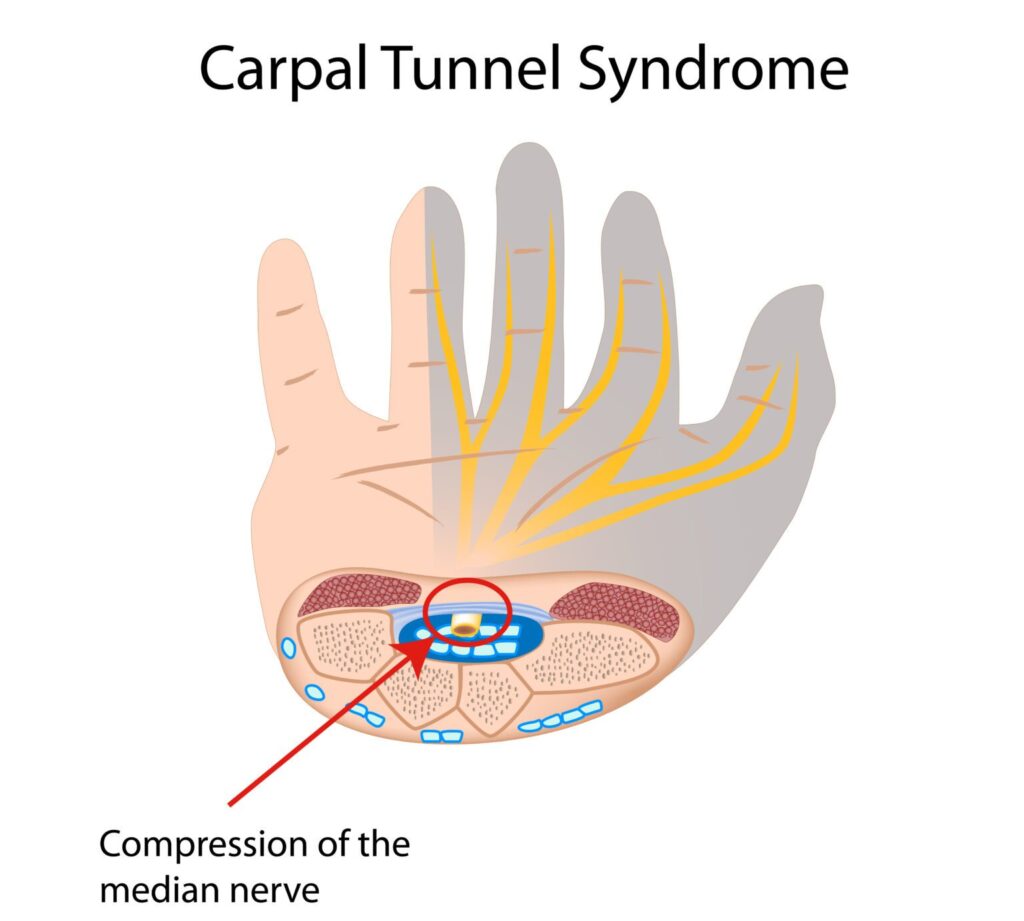
Carpal Tunnel Syndrome or CTS rounds out the Top 30 VA Disability Claims.
Carpal Tunnel Syndrome, or CTS, is a painful condition that results from pressure on the median nerve in the hand.
The “Carpal Tunnel” is a narrow passageway surrounded by bones and ligaments on the palm side of your hand.
The median nerve runs through the carpal tunnel and provides feeling and movement to parts of the hand, including the thumb and first three fingers.
When the median nerve becomes compressed, veterans may experience painful symptoms such as numbness, tingling, and weakness in the hand and arm.
In some cases, veterans with Carpal Tunnel may also have trouble gripping objects or performing other tasks that require manual dexterity.
The VA rates Carpal Tunnel under CFR Title 38, Part 4, Schedule for Rating Disabilities, Diagnostic Code (DC) 8515, Paralysis of the Median Nerve.
VA Ratings for Carpal Tunnel range from 10% to 70%, with breaks at 20%, 30%, 40%, 50%, and 60%, with lower or higher ratings for non-dominant (Minor) versus dominant (Major) hand.
However, the most common Carpal Tunnel Syndrome rating is 10%, which is “mild incomplete paralysis of the median nerve.”
How does the VA rate Carpal Tunnel Syndrome?
- Complete paralysis: If the hand is stuck bent away from the body at the wrist, the middle and index fingers are stuck in extension more than normal (cannot move either down or side to side), thumb is straight and stuck right up next to the index finger (the hand is completely flat) and the muscles at the base of thumb are atrophied (wasting away), and the palm of the hand cannot be turned to face downward, it is rated 70% for the Dominant arm and 60% for the Non-dominant arm.
- Severe Incomplete paralysis: Rated at 50% for the dominant arm and 40% for the non-dominant.
- Moderate Incomplete paralysis: Rated at 30% for the dominant and 20% for the non-dominant.
- Mild Incomplete paralysis: Rated at 10% for either arm.
Pro Tip: If your Carpal Tunnel Syndrome is severe, meaning you have no effective remaining function of one or both hands, you can qualify for Special Monthly Compensation (SMC-K) for Loss of Use of a Hand. If you qualify for SMC-K, the VA automatically adds $118.33 per month to your basic disability compensation pay rate. Veterans can receive up to three SMC-K awards in addition to basic disability pay and other SMC rates.
#31. Chronic Fatigue Syndrome (CFS)
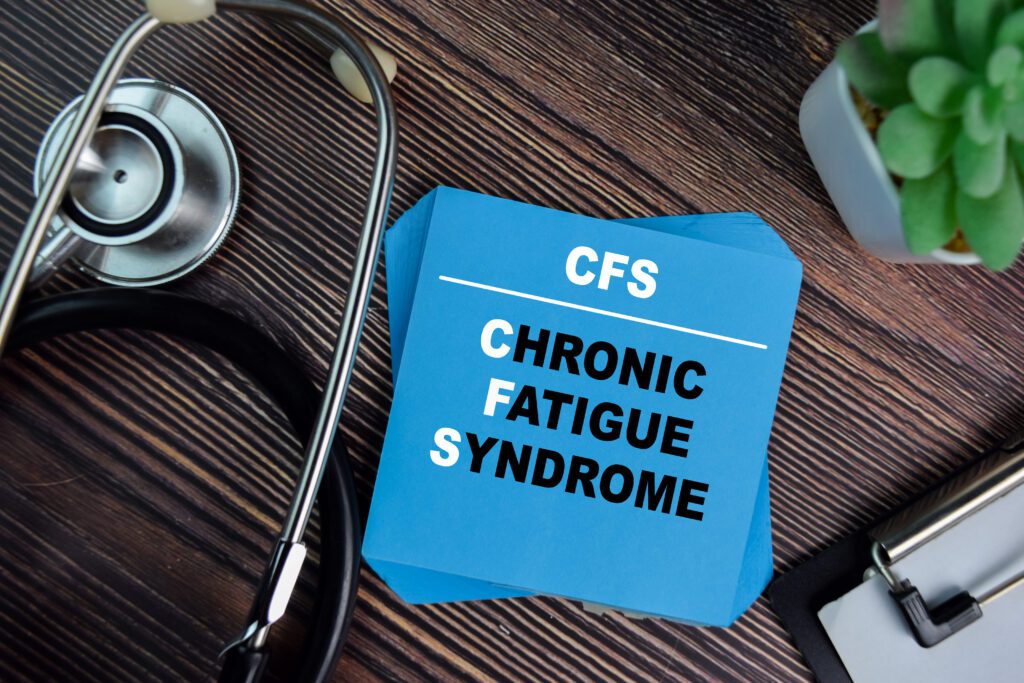
Chronic Fatigue Syndrome (CFS) is the #31 most claimed VA disability.
Chronic Fatigue Syndrome (CFS) is a complicated condition characterized by extreme fatigue that lasts for at least six months, and that can’t be fully explained by any other underlying medical condition.
The fatigue worsens with physical or mental activity but doesn’t improve with rest.
Chronic Fatigue Syndrome is rated under CFR 38, Part 4, VA Schedule of Ratings, Diagnostic Code 6354.
VA Disability Ratings for Chronic Fatigue Syndrome are 10%, 20%, 40%, 60%, and 100%, and depend upon the frequency, severity, and duration of a veteran’s symptoms.
What are the VA ratings for Chronic Fatigue Syndrome?
- 100 Percent Chronic Fatigue Syndrome VA Rating is warranted when a veteran has debilitating fatigue, cognitive impairments (such as inability to concentrate, forgetfulness, or confusion), or a combination of other signs and symptoms, which are nearly constant and so severe as to restrict routine daily activities almost completely and which may occasionally preclude self-care.
- 60 Percent VA Rating for Chronic Fatigue Syndrome is warranted if a veteran has debilitating fatigue, cognitive impairments (such as inability to concentrate, forgetfulness, or confusion), or a combination of other signs and symptoms, which are nearly constant and restrict routine daily activities to less than 50 percent of the pre-illness level; or which wax and wane, resulting in periods of incapacitation of at least six weeks total duration per year.
- 40 Chronic Fatigue Syndrome VA Rating is warranted when a veteran has debilitating fatigue, cognitive impairments (such as inability to concentrate, forgetfulness, or confusion), or a combination of other signs and symptoms, which are nearly constant and restrict routine daily activities from 50 to 75 percent of the pre-illness level; or which wax and wane, resulting in periods of incapacitation of at least four but less than six weeks total duration per year.
- 20 Percent VA Rating for Chronic Fatigue Syndrome is warranted when a veteran has debilitating fatigue, cognitive impairments (such as inability to concentrate, forgetfulness, or confusion), or a combination of other signs and symptoms, which are nearly constant and restrict routine daily activities by less than 25 percent of the pre-illness level; or which wax and wane, resulting in periods of incapacitation of at least two but less than four weeks total duration per year.
- 10 Percent VA Rating for Chronic Fatigue Syndrome is warranted when a veteran has debilitating fatigue, cognitive impairments (such as inability to concentrate, forgetfulness, or confusion), or a combination of other signs and symptoms, which wax and wane but result in periods of incapacitation of at least one but less than two weeks total duration per year; or symptoms controlled by continuous medication.
Pro Tip: Gulf War Veterans who develop Myalgic Encephalomyelitis / Chronic Fatigue Syndrome (ME/CFS) do not have to prove a connection between their illnesses and service to be eligible to receive VA disability compensation, although at VA Claims Insider we still recommend getting a Medical Nexus Letter (Independent Medical Opinion), especially since Gulf War Syndrome is commonly misunderstood by C&P examiners and VA Raters.
ME/CFS must have emerged during active duty in the Southwest Asia theater of military operations on or by December 31, 2021, and be at least 10 percent disabling. The VA has recognized medically unexplained illnesses, more commonly referred to as “Gulf War Syndrome,” and certain infectious diseases to include Chronic Fatigue Syndrome. A “Persian Gulf Veteran” is one who served in the Southwest Asia theater of operations during the Persian Gulf War. See 38 CFR § 3.317(e)(1)
What are the Theater of Operations Covered for Gulf War Syndrome?
The Southwest Asia theater of operations includes Iraq, Kuwait, Saudi Arabia, the neutral zone between Iraq and Saudi Arabia, Bahrain, Qatar, the United Arab Emirates, Oman, the Gulf of Aden, the Gulf of Oman, the Persian Gulf, the Arabian Sea, the Red Sea, and the airspace above these locations. See (38 CFR § 3.317(e)(2)
The term “qualifying chronic disability” means a chronic disability resulting from any of the following (or any combination of the following): (A) an undiagnosed illness; (B) a medically unexplained chronic multisymptomatic illness that is defined by a cluster of signs or symptoms, such as:
(1) chronic fatigue syndrome; (2) fibromyalgia; (3) functional gastrointestinal disorders (excluding structural gastrointestinal disease).
Once you are on the Gulf War Registry, you need to get to your Medical Professional for a diagnosis of Chronic Fatigue Syndrome.
#32. Fibromyalgia
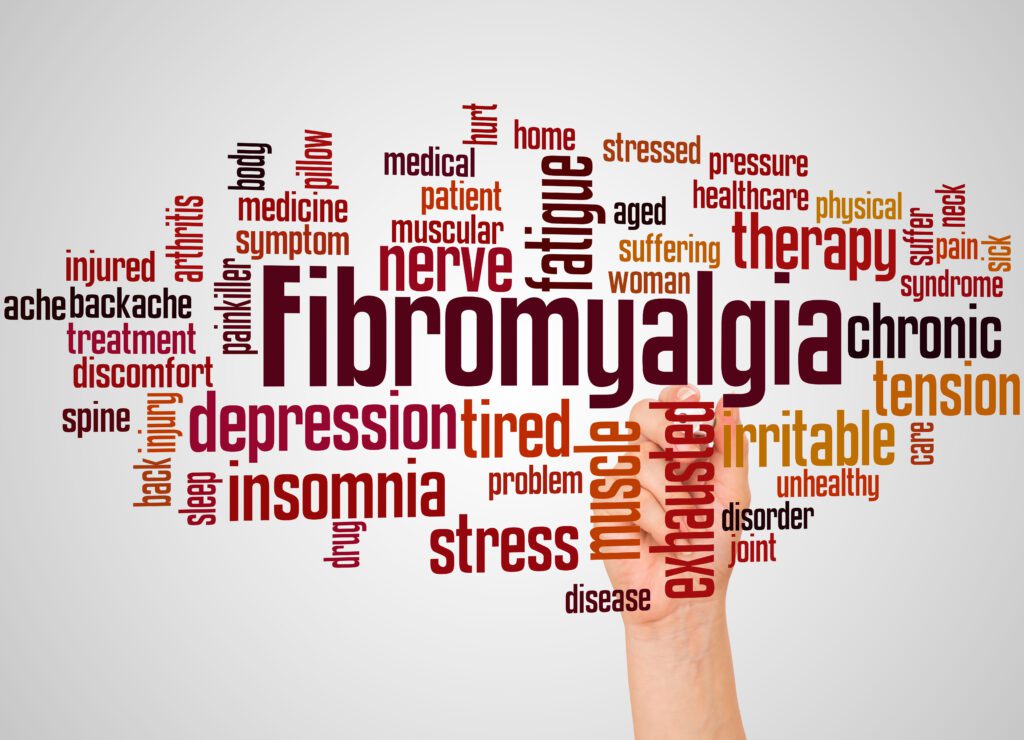
Fibromyalgia is the #32 most claimed VA disability condition.
Fibromyalgia is a condition characterized by widespread musculoskeletal pain accompanied by fatigue, sleep, memory, and mood issues.
Symptoms often begin after an event, such as physical trauma, surgery, infection, or significant psychological stress.
The VA rates Fibromyalgia under CFR 38, Part 4, VA Schedule of Ratings, Diagnostic Code 5025, Fibromyalgia (fibrositis, primary fibromyalgia syndrome).
VA Ratings for Fibromyalgia range from 10% to 40%, with a break at 20%.
What are the VA disability ratings for Fibromyalgia?
- With widespread musculoskeletal pain and tender points, with or without associated fatigue, sleep disturbance, stiffness, paresthesias, headache, irritable bowel symptoms, depression, anxiety, or Raynaud’s-like symptoms: That are constant, or nearly so, and refractory to therapy rate at 40%.
- That are episodic, with exacerbations often precipitated by environmental or emotional stress or by overexertion, but that are present more than one-third of the time rate at 20%.
- That require continuous medication for control rate at 10%.
Note: Widespread pain means pain in both the left and right sides of the body, that is both above and below the waist, and that affects both the axial skeleton (i.e., cervical spine, anterior chest, thoracic spine, or low back) and the extremities.
Pro Tip: Fibromyalgia is a presumptive illness for Gulf War Veterans. The VA presumes that some health conditions, including Fibromyalgia, were caused by your military service. As a presumptive illness, veterans do not have to prove an association between Fibromyalgia and their military service.
The VA has a Gulf War Registry that Veterans can participate in. Contact your local VA Environmental Health Coordinator about getting a Gulf War Registry health exam. Once you are on the Gulf War Registry, you need to get to your Medical Professional for a diagnosis of Fibromyalgia.
#33. Eczema

Eczema is the #33 most common VA claim.
Atopic Dermatitis or Eczema is a condition that makes your skin red and itchy.
Eczema is a chronic disability and tends to flare periodically.
No cure has been found for Atopic Dermatitis (Eczema).
The VA rates both Dermatitis and Eczema under CFR 38, Part 4, VA Schedule of Ratings, Diagnostic Code 7806, but evaluates both conditions using the General Rating Formula for the Skin.
VA Ratings for Eczema range from 0 percent to 60 percent with breaks at 10 percent and 30 percent.
The highest scheduler rating for Eczema is 60%.
What are the VA disability ratings for Eczema?
The 60% rating for Eczema must include symptoms of at least one of the following:
- Characteristic lesions involving more than 40 percent of the entire body, or more than 40 percent of exposed areas affected, or
- Constant or near-constant systemic therapy including, but not limited to, corticosteroids, phototherapy, retinoids, biologics, photochemotherapy, psoralen with long-wave ultraviolet-A light (PUVA), or other immunosuppressive drugs required over the past 12-month period.
The 30% rating for Eczema must include symptoms of at least one of the following:
- Characteristic lesions involving 20 to 40 percent of the entire body or 20 to 40 percent of exposed areas affected; or Systemic therapy including, but not limited to, corticosteroids, phototherapy, retinoids, biologics, photochemotherapy, PUVA, or
- Other immunosuppressive drugs required for a total duration of 6 weeks or more, but not constantly, over the past 12-month period.
The 10% rating for Eczema must include symptoms of at least one of the following:
- Characteristic lesions involving at least 5 percent, but less than 20 percent, of the entire body affected; or
- At least 5 percent, but less than 20 percent, of exposed areas affected; or
- Intermittent systemic therapy including, but not limited to, corticosteroids, phototherapy, retinoids, biologics, photochemotherapy, PUVA, or other immunosuppressive drugs required for a total duration of less than 6 weeks over the past 12-month period.
The 0% VA rating for Eczema is no more than topical therapy required over the past 12-month period and at least one of the following:
- Characteristic lesions involving less than 5 percent of the entire body affected; or
- Characteristic lesions involving less than 5 percent of exposed areas affected
Pro Tip: Using VA.gov, you should upload pictures of your Eczema for the C&P examiner and VA Rater. It’s the #1 best way to prove you have Eczema and how much of your body they cover.
#34. Allergic Rhinitis (Hay Fever)

Allergic Rhinitis is the #34 most common VA disability claim.
Allergic Rhinitis, also called Hay Fever, is an allergic reaction in your nose that causes sneezing, congestion, itchy nose, and sore throat.
The VA rates Allergic Rhinitis under CFR 38, Part 4, VA Schedule of Ratings, Diagnostic Code 6522, Allergic or Vasomotor Rhinitis:
VA Ratings for Allergic Rhinitis are either 10 percent or 30 percent.
The maximum scheduler rating for Allergic Rhinitis is 30%.
What is the VA rating scale for Rhinitis?
- If you have Allergic Rhinitis with Polyps, you’ll get a 30% rating.
- Without polyps, but with greater than 50-percent obstruction of nasal passage on both sides or complete obstruction on one side, you’ll get a 10% rating.
Pro Tip: Were you exposed to Burn Pits? If you served in Afghanistan, Southwest Asia or certain other regions and developed sinusitis, rhinitis, rhinosinusitis, or asthma within 10 years from your separation from active duty service, these respiratory conditions are presumed to be service-connected. (This is especially big news for Afghanistan veterans, who had no presumptives available to them before this ruling.)
#35. Sinusitis

Sinusitis is the #35 most often claimed VA disability condition.
Sinusitis occurs when your sinuses become swollen and inflamed for three months or longer, despite treatment.
This common condition in veterans interferes with the way mucus normally drains and makes your nose stuffy.
Breathing through your nose may be difficult, and the area around your eyes might feel swollen or tender.
The VA rates Sinusitis under CFR 38, Part 4, VA Schedule of Ratings, Diagnostic Code 6510, Sinusitis, pansinusitis, chronic.
VA Ratings for Sinusitis range from 0% to 50% with breaks at 10% and 30%.
The highest scheduler rating for Sinusitis is 50 percent.
What is the VA rating scale for Sinusitis?
- Following radical surgery with chronic osteomyelitis, or; near constant sinusitis characterized by headaches, pain and tenderness of affected sinus, and purulent discharge or crusting after repeated surgeries rate at 50%.
- Three or more incapacitating episodes per year of sinusitis requiring prolonged (lasting four to six weeks) antibiotic treatment, or; more than six non-incapacitating episodes per year of sinusitis characterized by headaches, pain, and purulent discharge or crusting rate at 30%.
- One or two incapacitating episodes per year of sinusitis requiring prolonged (lasting four to six weeks) antibiotic treatment, or; three to six non-incapacitating episodes per year of sinusitis characterized by headaches, pain, and purulent discharge or crusting rate at 10%.
- Detected by X-ray only rate at 0%
Note: An “incapacitating episode” of Sinusitis means one that requires bed rest and treatment by a physician.
Pro Tip: Were you exposed to Burn Pits? If you served in Afghanistan, Southwest Asia or certain other regions and developed sinusitis, rhinitis, rhinosinusitis, or asthma within 10 years from your separation from active duty service, these respiratory conditions are presumed to be service-connected. (This is especially big news for Afghanistan veterans, who had no presumptives available to them before this ruling.)
#36. Meniere’s Syndrome

Meniere’s Syndrome is the #36 most claimed VA disability.
Meniere’s Syndrome is a condition of the inner ear that can lead to dizzy spells (e.g., Vertigo) and Hearing Loss.
The VA rates Meniere’s Syndrome as an ear condition under CFR 38, Part 4, VA Schedule of Ratings, Diagnostic Code 6205, Meniere’s Syndrome (Endolymphatic Hydrops).
VA Ratings for Meniere’s Syndrome are 30%, 60%, and 100%.
The highest scheduler VA rating for Meniere’s Syndrome with hearing impairment with attacks of vertigo and cerebellar gait occurring more than once weekly, with or without Tinnitus is 100 percent.
What are the VA ratings for Meniere’s Syndrome?
- Hearing impairment with attacks of vertigo and cerebellar gait occurring more than once weekly, with or without tinnitus rate at 100%
- Hearing impairment with attacks of vertigo and cerebellar gait occurring from one to four times a month, with or without tinnitus rate at 60%
- Hearing impairment with vertigo less than once a month, with or without Tinnitus rate at 30%
Note: Evaluate Meniere’s Syndrome either under these criteria or by separately evaluating vertigo (as a peripheral vestibular disorder), hearing impairment, and tinnitus, whichever method results in a higher overall evaluation. But do not combine an evaluation for hearing impairment, tinnitus, or vertigo with an evaluation under diagnostic code 6205.
Pro Tip: Get a medical diagnosis for Meniere’s Syndrome before you try to file a VA claim. If you don’t have a diagnosis of Meniere’s Syndrome, you’ll be denied VA disability benefits.
#37. Arteriosclerotic Heart Disease (Coronary Artery Disease)

Arteriosclerotic Heart Disease or more commonly known as Coronary Artery Disease is the #37 most common VA claim.
Coronary Artery Disease is the buildup of plaque in the arteries that supply blood to your heart.
Plaque causes a narrowing or blockage that could result in a heart attack.
Symptoms include chest pain or discomfort and shortness of breath.
The VA rates Arteriosclerotic Heart Disease (Coronary Artery Disease) under CFR 38, Part 4, VA Schedule of Ratings, the General Rating Formula for Diseases of the Heart, Diagnostic Code 7005.
VA Ratings for Heart Disease range from 10% to 100% with breaks at 30% and 60%.
The highest scheduler rating for Heart Disease is 100 percent, which means your workload of 3.0 METs or less results in heart failure symptoms.
What are the VA disability ratings for Coronary Artery Disease?
- Workload of 3.0 METs or less results in heart failure symptoms rate at 100%.
- Workload of 3.1-5.0 METs results in heart failure symptoms rate at 60%.
- Workload of 5.1-7.0 METs results in heart failure symptoms; or evidence of cardiac hypertrophy or dilatation confirmed by echocardiogram or equivalent (e.g., multigated acquisition scan or magnetic resonance imaging) rate at 30%.
- Workload of 7.1-10.0 METs results in heart failure symptoms; or continuous medication required for control rate at 10%.
Pro Tip: There are a range of tests a doctor will perform to diagnose a veteran with Heart Disease. It is highly recommended that you have a medical diagnosis of a heart condition before you file a VA disability claim. With no diagnosis, you’ll be denied VA benefits.
#38. Chronic Conjunctivitis
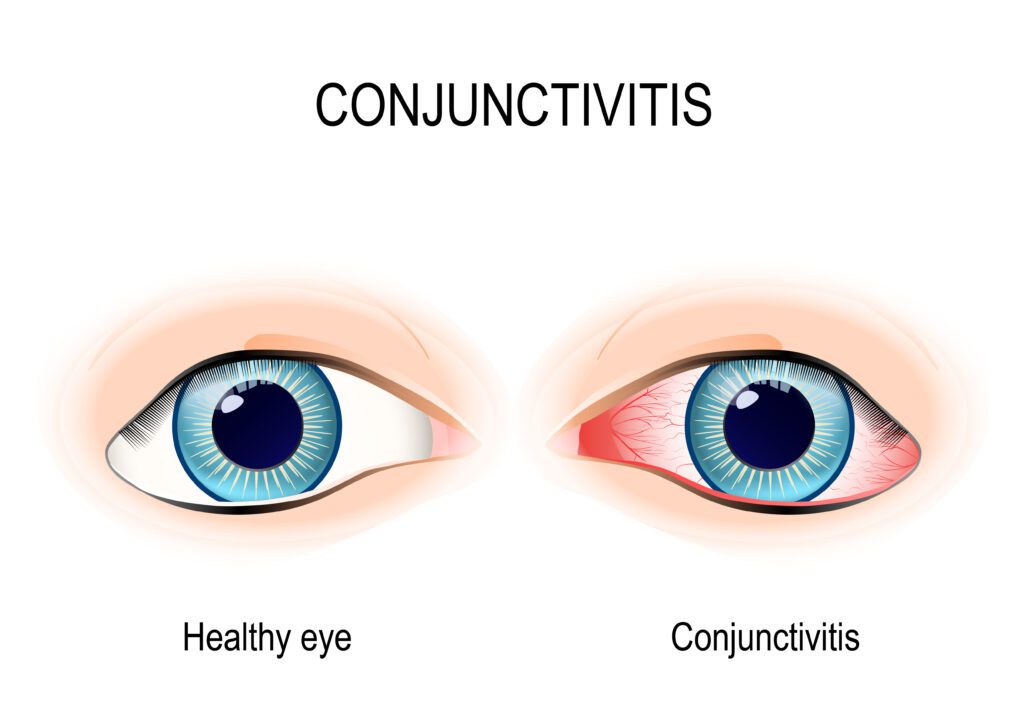
Chronic Conjunctivitis is the #38 most claimed VA disability.
Conjunctivitis is an inflammation of the conjunctiva in the eye.
Conjunctivitis that persists for four or more weeks is considered chronic.
The VA rates Chronic Conjunctivitis under CFR 38, Part 4, VA Schedule of Ratings, the General Rating Formula for Diseases of the Eye, Diagnostic Code 6018 Chronic Conjunctivitis (Nontrachomatous).
The VA rating for Conjunctivitis is 10%.
There are no other ratings.
What are the VA disability ratings for Conjunctivitis?
- Active Conjunctivitis: Evaluate under the General Rating Formula for Diseases of the Eye, and rate at 10%.
- Inactive Conjunctivitis: Evaluate based on residuals, such as visual impairment and disfigurement (DC 7800)
Pro Tip: If you have Active Conjunctivitis that is Trachomatous, the condition is rated at 30% under DC 6017.
#39. Limited Motion of the Jaw (Temporomandibular Disorder)
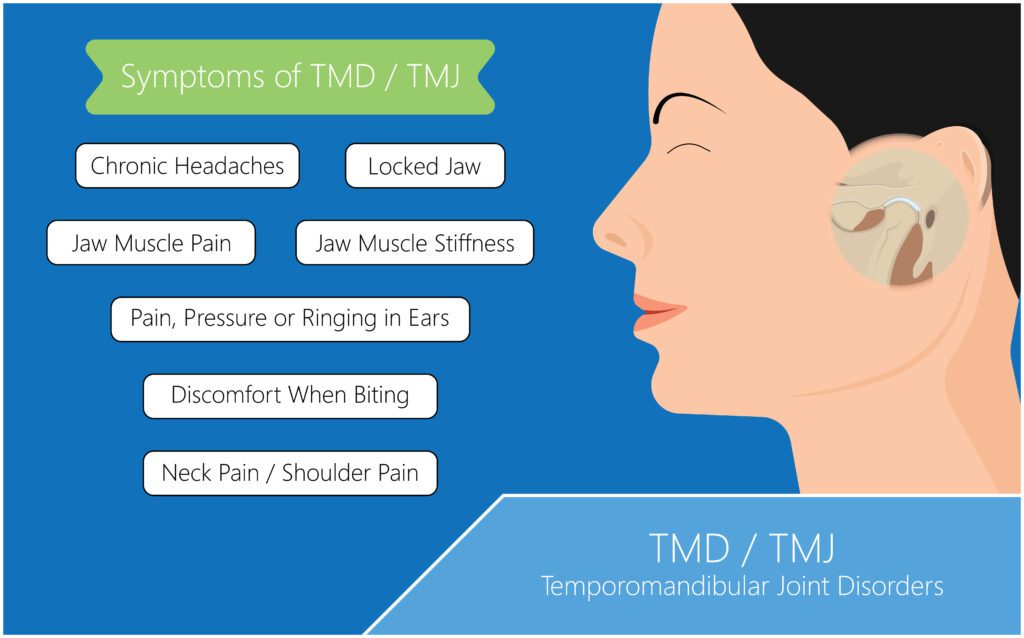
Limited Motion of the Jaw, also known as Temporomandibular Disorder (TMD), is the #39 VA disability compensation claim.
Temporomandibular Disorders (TMD) are conditions of the jaw muscles, temporomandibular joints, and the nerves associated with chronic facial pain.
The VA rates Limited Motion of the Jaw under CFR 38, Part 4, VA Schedule of Ratings, Diagnostic Code9905, Temporomandibular Disorder, and is rated based on limited range of motion of the jaw joint plus the ability to eat regular or mechanically altered food.
VA Ratings for Limited Range of Motion of the Jaw are 10 percent, 20 percent, 30 percent, 40 percent, and 50 percent.
The highest scheduler rating for TMD is 50%.
What is the VA rating scale for Jaw conditions?
- If the jaw can’t open more than 10 mm (about 0.4 of an inch), then it is rated 50% when only able to eat mechanically altered food, and 40% when able to eat normally.
- If it can open between 11 and 20 mm (about 0.4 to 0.8 of an inch), it is rated 40% when only able to eat mechanically altered food, and 30% when able to eat normally.
- If it can open between 21 and 29 mm (about 0.8 to 1.1 inches), it is rated 40% when restricted to full liquid and pureed foods only, 30% when limited to soft and semi-solid foods only, and 20% when able to eat normally.
- If it can open between 30 and 34 mm (about 1.2 to 1.3 inches), it is rated 30% when restricted to full liquid and pureed foods only, 20% when limited to soft and semi-solid foods only, and 10% when able to eat normally.
- If the jaw can’t move side-to-side more than 4 millimeters (mm), then it is rated 10%.
Pro Tip: The Painful Motion principle applies in cases of TMD, TMJ, or any other condition that causes pain when moving the jaw. So, whether the jaw can move, the minimum rating if pain is present is 10%.
#40. Hiatal Hernia
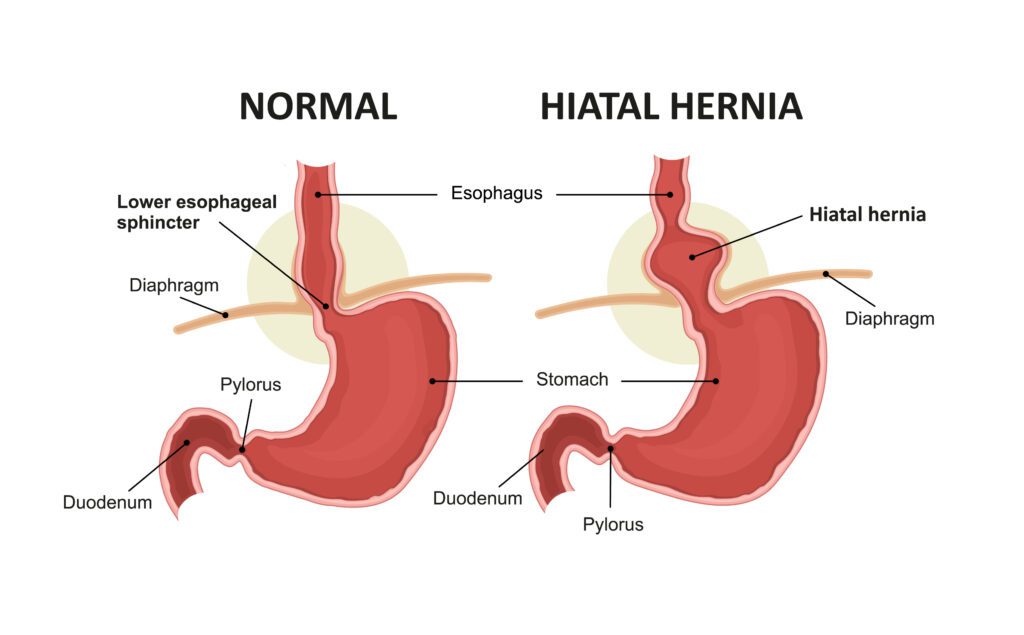
Hiatal Hernia is the #40 most claimed VA disability condition and rounds out the Top 40 VA Disability Claims.
A Hiatal Hernia arises when the upper part of your stomach expands through the large muscle separating your abdomen and chest.
The VA rates Hiatal Hernia under CFR 38, Part 4, VA Schedule of Ratings, Diagnostic Code (DC)7246, Hernia, Hiatal.
This is the same DC that the VA uses to rate GERD and other forms of epigastric distress by analogy.
VA Ratings for Hiatal Hernia are 10 percent, 30 percent, and 60 percent.
The highest scheduler rating for Hiatal Hernia is 60%.
What are the VA ratings for Hiatal Hernia?
- Hernia with symptoms of pain, vomiting, material weight loss and hematemesis or melena with moderate anemia; or other symptom combinations productive of severe impairment of health rate at 60%.
- Hernia with persistently recurrent epigastric distress with dysphagia, pyrosis, and regurgitation, accompanied by substernal or arm or shoulder pain, productive of considerable impairment of health rate at 30%.
- Hernia with two or more of the symptoms for the 30% evaluation of less severity rate at 10%.
Pro Tip: Hernia conditions can be rated as high as 100% under other Diagnostic Codes. For example, under DC 7339 Hernia, Ventral, Postoperative, if a veteran has massive, persistent, severe diastasis of recti muscles or extensive diffuse destruction or weakening of muscular and fascial support of abdominal wall to be inoperable, rate at 100 percent.
#41. Hemorrhoids

Hemorrhoids are the #41 most common VA claim.
Hemorrhoids are swollen veins inside or outside the body near the anus.
They are created from a lot of pressure being used to pass feces and can be very painful.
The VA rates Hemorrhoids under CFR 38, Part 4, VA Schedule of Ratings, Diagnostic Code (DC)7336.
VA Ratings for Hemorrhoids range from 0% to 20%, with a break at 10%.
The maximum scheduler rating for Hemorrhoids is 20 percent.
What are the VA disability ratings for Hemorrhoids?
- If the hemorrhoids cause constant bleeding that leads to significant blood loss and anemia, a decrease in the number of red blood cells, or if they cause Fissures, it is rated 20%.
- If there are blood clots inside the swollen veins, the swelling can’t go down, and there is a lot of Redundant Tissue, it is rated 10%.
- If they are only moderate with occasional bleeding, it is rated 0%.
Pro Tip: Get a medical diagnosis for Hemorrhoids before you try to file a VA claim. If you don’t have a diagnosis, you’ll be denied VA disability benefits. It’s also recommended that you get a Nexus Letter from a private provider, especially if you weren’t diagnosed with Hemorrhoids in the military.
#42. Varicose Veins
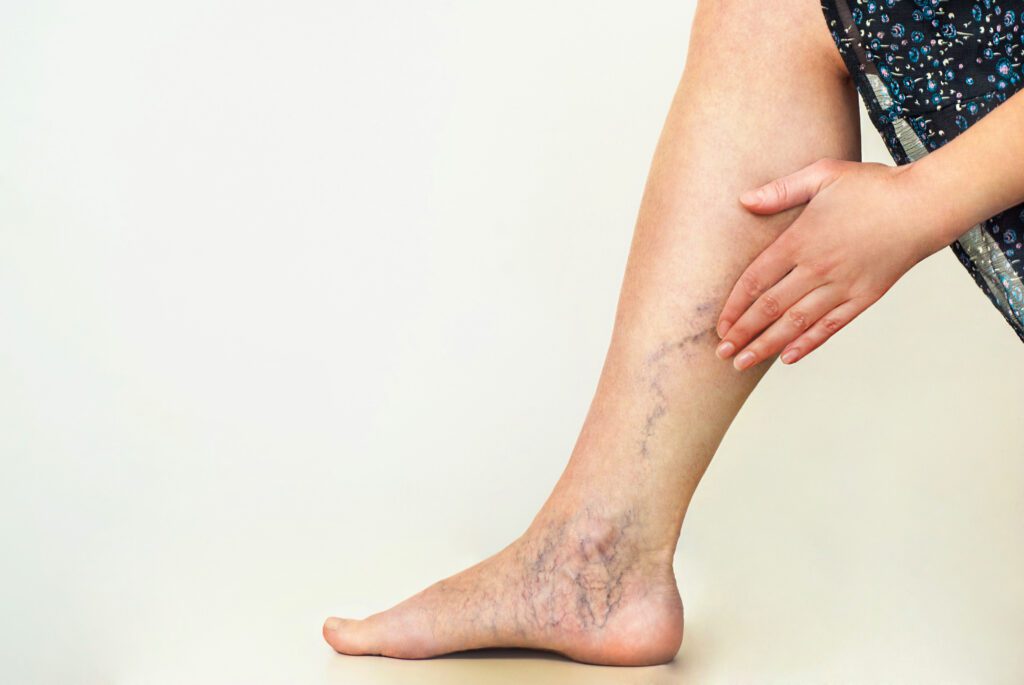
Varicose Veins are the #42 most claimed VA disability.
Varicose Veins are “spider-like,” enlarged veins, and can even become discolored.
Any vein may become varicosed although the veins most affected are those in your legs.
That’s because standing and walking increases the pressure in the veins of your lower body.
The VA rates Varicose Veins under CFR 38, Part 4, VA Schedule of Ratings, Diagnostic Code (DC)7121, Post-phlebitic syndrome of any etiology.
VA ratings for Varicose Veins range from 0% to 100% with breaks at 10%, 20%, 40%, and 60%.
The highest scheduler rating for Varicose Veins is 100 percent.
What are the VA ratings Varicose Veins?
- Massive board-like edema with constant pain at rest rate at 100%.
- Persistent edema or subcutaneous induration, stasis pigmentation or eczema, and persistent ulceration rate at 60%.
- Persistent edema and stasis pigmentation or eczema, with or without intermittent ulceration rate at 40%.
- Persistent edema, incompletely relieved by elevation of extremity, with or without beginning stasis pigmentation or eczema rate at 20%.
- Intermittent edema of extremity or aching and fatigue in leg after prolonged standing or walking, with symptoms relieved by elevation of extremity or compression hosiery rate at 10%.
- Asymptomatic palpable or visible varicose veins rate at 0%.
Pro Tip: The evaluations above are for involvement of a single extremity. If more than one extremity is involved, evaluate each extremity separately and combine under § 4.25, using the bilateral factor § 4.26, if applicable.
#43. Nephrolithiasis (Kidney Stones)

Kidney Stones are the #43 most common VA disability claim.
Kidney Stones are hard deposits made of minerals and salts that form inside your kidneys and can be very painful.
The VA rates Kidney Stones under CFR 38, Part 4, VA Schedule of Ratings, Diagnostic Code (DC)7508, Nephrolithiasis, and DC 7509, Hydronephrosis.
VA ratings for Kidney Stones range from 10 percent to 30 percent with a break at 20 percent.
The maximum scheduler rating for Kindsey Stones is 30%.
What are the VA disability ratings for Kidney Stones?
- If Kidney Stones are repeatedly formed and it requires removal surgeries or procedures 3 or more times each year, it is rated 30%.
Otherwise, Kidney Stones are rated as Hydronephrosis, DC 7509 with ratings of 10%, 20%, and 30%.
- If the condition does not require a catheter to drain the fluid, then it is rated 10%.
- If there are regular attacks of renal colic and the use of a catheter is required, then it is rated 20%.
- If there are regular attacks of colic and an infection that affects the functioning of the kidney, then it is rated 30%.
Pro Tip: Any disability condition more severe than this is rated under the Renal Rating System.
#44. Hypothyroidism
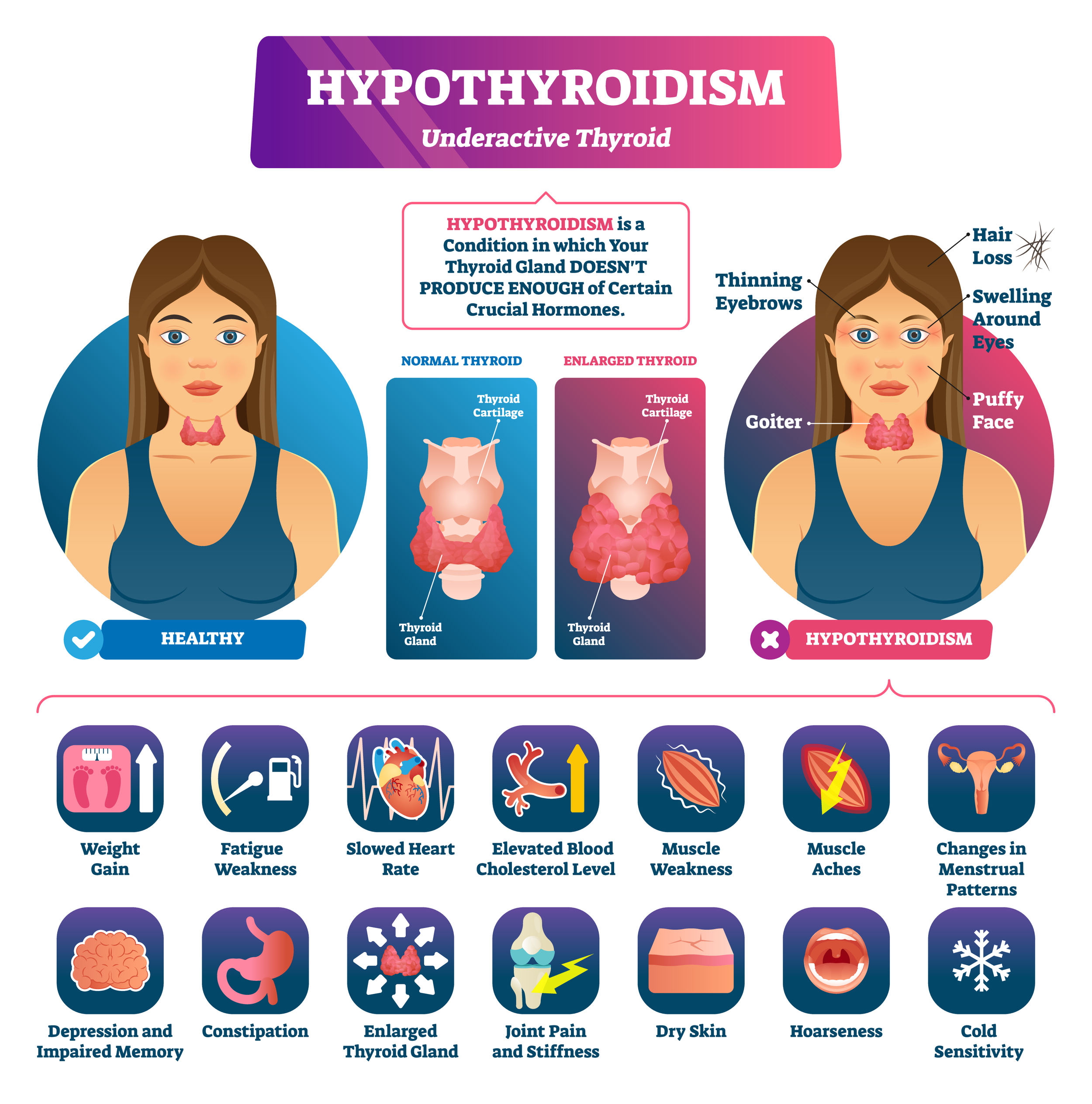
Hypothyroidism is the #44 most common VA claim.
Hypothyroidism, “underactive thyroid,” is a condition whereby your thyroid gland doesn’t produce enough of certain crucial hormones.
The VA rates Hypothyroidism under CFR 38, Part 4, VA Schedule of Ratings, Diagnostic Code (DC)7903, Hypothyroidism.
VA ratings for Hypothyroidism are either 30% or 100%.
The highest scheduler VA rating for Hypothyroidism is 100 percent.
What are the VA disability ratings for Hypothyroidism?
- Hypothyroidism manifesting as myxedema (cold intolerance, muscular weakness, cardiovascular involvement (including, but not limited to hypotension, bradycardia, and pericardial effusion), and mental disturbance (including, but not limited to dementia, slowing of thought and depression) rate at 100%.
- Hypothyroidism without myxedema rate at 30%.
Pro Tip: This evaluation shall continue for six months beyond the date that an examining physician has determined crisis stabilization. Thereafter, the residual effects of hypothyroidism shall be rated under the appropriate diagnostic code(s) within the appropriate body system(s) (e.g., eye, digestive, and mental disorders).
#45. Anemia

Anemia is the #45 most common VA disability.
Anemia is a disability condition in which you lack enough healthy red blood cells to carry adequate oxygen to your body’s tissues.
Having Anemia, also referred to as “low hemoglobin,” can make you feel tired and weak.
The VA rates Anemia under CFR 38, Part 4, VA Schedule of Ratings, multiple Diagnostic Codes depending on the type of Anemia you suffer from: DC 7720, DC 7721, DC 7722, DC 7723, DC 7714, and DC 7716.
VA ratings for Anemia range from 0% to 100% with breaks at 10%, 20%, 30%, and 60%.
The highest scheduler VA rating for Anemia is 100 percent.
Pro Tip: Get a medical diagnosis for Anemia before you try to file a VA claim. If you don’t have a diagnosis, you’ll be denied VA disability benefits. It’s also recommended that you get a Nexus Letter from a private provider, especially if you weren’t diagnosed with Anemia in the military.
#46. Peripheral Neuropathy
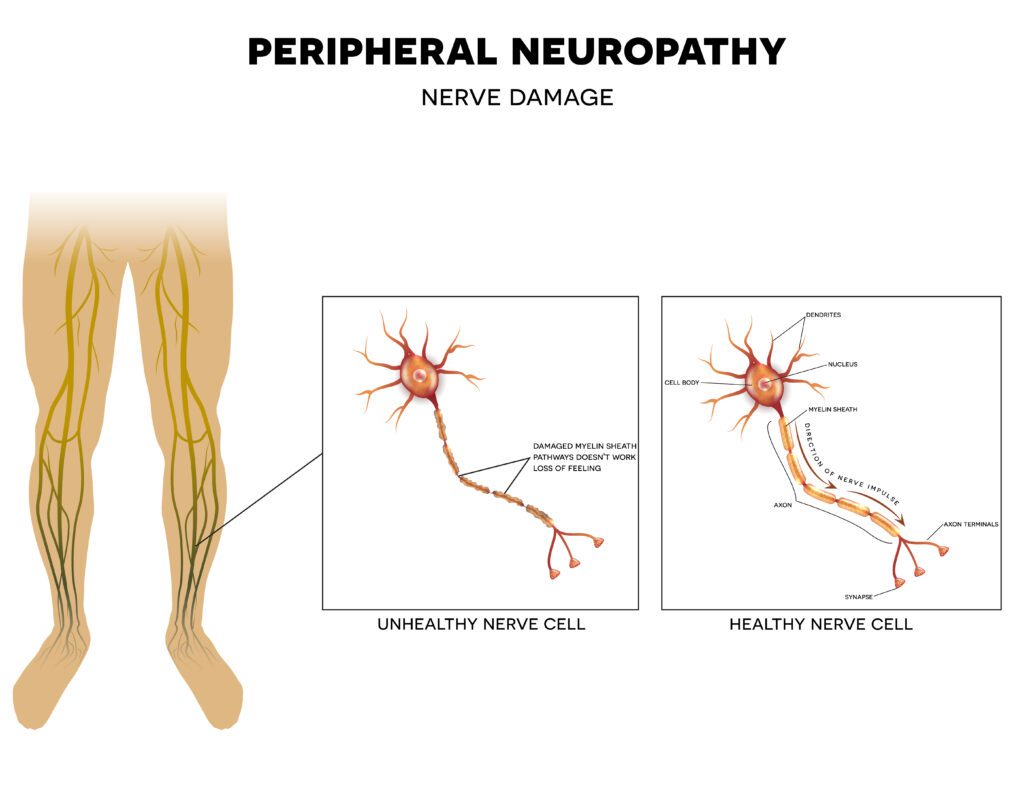
Peripheral Neuropathy is the #46 most common VA disability claim.
Peripheral Neuropathy is the result of damage to the nerves located outside of the brain and spinal cord (peripheral nerves).
It can cause weakness, numbness, and pain—typically in the hands and feet.
Since there is no separate DC for Peripheral Neuropathy, the VA rates it by analogy under CFR 38, Part 4, VA Schedule of Ratings, Diagnostic Code (DC)8520, Paralysis of the Sciatic Nerve.
VA Ratings for Peripheral Neuropathy range from 10 percent to 80 percent, with breaks at 20 percent, 40 percent, and 60 percent.
The highest scheduler rating for Peripheral Neuropathy is 80%.
What are the VA disability ratings for Peripheral Neuropathy?
- 80%: Complete paralysis; the foot dangles and drops, no active movement possible of muscles below the knee, flexion of knee weakened or lost
- 60%: Incomplete paralysis, severe with “marked muscular atrophy”
- 40%: Incomplete paralysis, moderately severe
- 20%: Incomplete paralysis, moderate
- 10%: Incomplete paralysis, mild with flexion of knee weakened or (very rarely) lost
Pro Tip: A Limitation of Range of Motion (ROM) test with a goniometer should be performed at your C&P exam for Peripheral Neuropathy. Make the doctor stop as soon as you feel pain!
#47. Prostate Gland Injuries
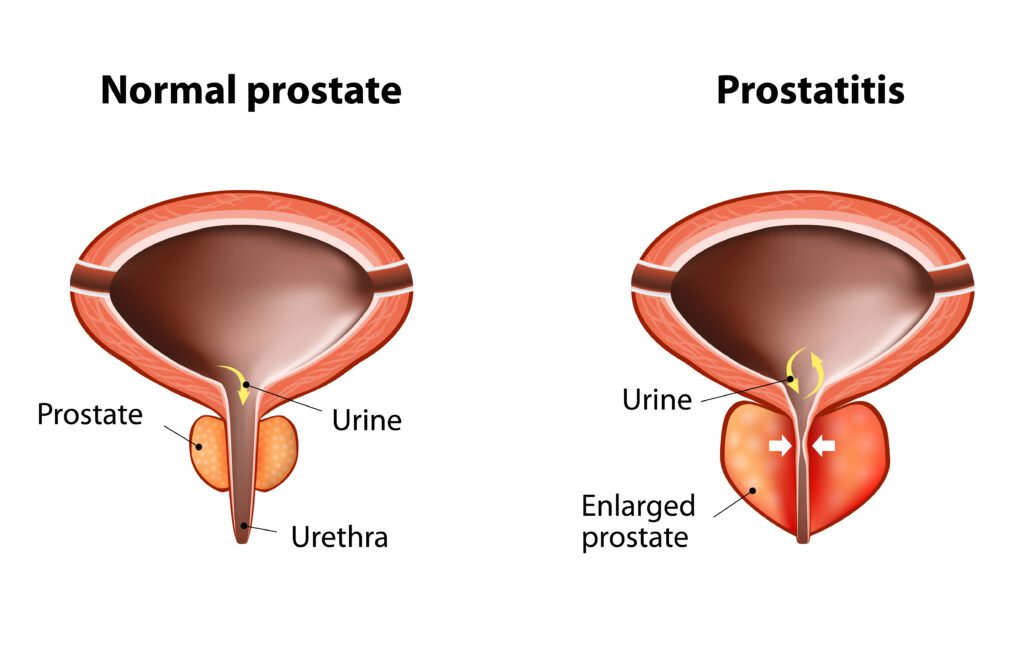
Prostate Gland conditions are the #47 most common VA claim.
The most common type of Prostate Gland disabilities is Benign Prostatic Hyperplasia (BPH), also called prostate gland enlargement, and is a very common condition as men age.
An enlarged prostate gland can cause uncomfortable urinary symptoms, such as blocking the flow of urine out of the bladder.
It can also cause bladder, urinary tract, or kidney problems.
The VA rates Prostate Gland injuries (all except prostatitis, DC 7525), under CFR 38, Part 4, VA Schedule of Ratings, Diagnostic Code (DC)7527, Prostate Gland.
Prostate Gland conditions and bladder outlet obstruction are rated under this code (DC 7527) either as urinary tract infections or under the Urinary Rating System, whichever better defines the symptoms of the condition.
VA ratings for Prostate Gland injuries fall between 0% and 60% with breaks at 10%, 20%, 30%, and 40%, depending on the Diagnostic Code it’s rated under.
The maximum scheduler rating for Prostate Gland conditions is 60 percent if you require the use of an appliance or the wearing of absorbent materials which must be changed more than 4 times per day.
What are the VA ratings for Prostate Gland conditions?
- A 30% rating is given if the condition causes regular infections that require a stent or nephrostomy tube to be implanted for drainage, if the condition requires hospitalization 3 or more times a year, or if it requires serious continuous treatment.
- A 10% rating is given if the condition requires suppressive drug therapy for 6 months or more, or 1 or 2 hospitalizations a year.
- A 0% rating is given if the condition is recurrent and requires treatment of suppressive drug therapy for less than 6 months but does not require hospitalizations.
VA ratings for “Voiding Dysfunction” of Prostate Gland injuries:
Rate particular condition as urine leakage, frequency, or obstructed voiding Continual Urine Leakage, Post-Surgical Urinary Diversion, Urinary Incontinence, or Stress Incontinence:
- Requiring the use of an appliance or the wearing of absorbent materials which must be changed more than 4 times per day rate at 60%.
- Requiring the wearing of absorbent materials which must be changed 2 to 4 times per day rate at 40%.
- Requiring the wearing of absorbent materials which must be changed less than 2 times per day rate at 20%.
Pro Tip: Get a medical diagnosis for Prostate Gland injuries before you try to file a VA claim. If you don’t have a diagnosis, you’ll be denied VA disability benefits. It’s also recommended that you get a Nexus Letter from a private provider, especially if you weren’t diagnosed with a Prostate Gland condition in the military.
#48. Ischemic Heart Disease

Ischemic Heart Disease is the #48 most common VA claim.
Ischemic Heart Disease, also called Myocardial Ischemia, occurs when blood flow to your heart is reduced, preventing the heart muscle from receiving enough oxygen.
The reduced blood flow is usually the result of a partial or complete blockage of your heart’s arteries.
The VA rates Ischemic Heart Disease under CFR 38, Part 4, VA Schedule of Ratings, the General Rating Formula for Diseases of the Heart, Diagnostic Code 7005.
VA Ratings for Heart Disease range from 10% to 100% with breaks at 30% and 60%.
The highest scheduler rating for Ischemic Heart Disease is 100%, which means your workload of 3.0 METs or less results in heart failure symptoms.
What are the VA disability ratings for Ischemic Heart Disease?
- Workload of 3.0 METs or less results in heart failure symptoms rate at 100%.
- Workload of 3.1-5.0 METs results in heart failure symptoms rate at 60%.
- Workload of 5.1-7.0 METs results in heart failure symptoms; or evidence of cardiac hypertrophy or dilatation confirmed by echocardiogram or equivalent (e.g., multigated acquisition scan or magnetic resonance imaging) rate at 30%.
- Workload of 7.1-10.0 METs results in heart failure symptoms; or continuous medication required for control rate at 10%.
Pro Tip: There are a range of tests a doctor will perform to diagnose a veteran with Heart Disease. It is highly recommended that you have a medical diagnosis of a heart condition before you file a VA disability claim. With no diagnosis, you’ll be denied VA benefits.
#49. Vertigo

Vertigo is the #49 most claimed VA disability.
Benign Paroxysmal Positional Vertigo (BPPV) is one of the most common causes of Vertigo, which is the sudden sensation that you’re spinning or that the inside of your head is spinning.
The VA rates Vertigo under CFR 38, Part 4, VA Schedule of Ratings, using one of two Diagnostic Codes, depending on the severity of your symptoms: DC 6204, Peripheral Vestibular Disorders or DC 6205 Meniere’s Syndrome.
VA ratings for Vertigo range from 10% to 100% with breaks at 30% and 60%.
The highest schedular rating for Vertigo is 100 percent and includes severe symptoms of hearing impairment with attacks of vertigo and cerebellar gait occurring more than once weekly, with or without Tinnitus.
What are the VA disability ratings for Vertigo?
The VA will select the Diagnostic Code that most accurately describes your Vertigo symptoms in terms of frequency, severity, and duration.
- Vertigo with dizziness and occasional staggering rate at 30%.
- Vertigo with occasional dizziness rate at 10%.
Note: Objective findings supporting the diagnosis of vestibular disequilibrium are required before a compensable evaluation can be assigned under this code. Hearing impairment or suppuration shall be separately rated and combined.
What are the VA ratings for Vertigo and Meniere’s Syndrome?
- Hearing impairment with attacks of vertigo and cerebellar gait occurring more than once weekly, with or without tinnitus rate at 100%
- Hearing impairment with attacks of vertigo and cerebellar gait occurring from one to four times a month, with or without tinnitus rate at 60%
- Hearing impairment with vertigo less than once a month, with or without Tinnitus rate at 30%
Pro Tip: Get a medical diagnosis for Vertigo before you try to file a VA claim. If you don’t have a diagnosis of Vertigo, you’ll be denied VA disability benefits.
#50. Urinary Incontinence

Rounding out the Top 50 VA disability claims is Urinary Incontinence at #50.
Urinary Incontinence is the loss of bladder control.
It is a very common and often embarrassing problem.
The severity of symptoms ranges from occasionally leaking urine when you cough or sneeze to having such an urge to urinate that you can’t reach a toilet in time.
The VA rates Urinary Incontinence under CFR 38, Part 4, VA Schedule of Ratings, Diagnostic Codes for Voiding Dysfunction or Urinary Frequency, whichever is worse.
VA ratings for Urinary Incontinence range from 10% to 60% with breaks at 20%, and 40% depending upon the frequency, severity, and duration of your symptoms.
The maximum schedular rating for Urinary Incontinence is 60 percent.
How does the VA rate Urinary Incontinence?
If you have Urinary Incontinence with:
- Daytime voiding interval less than one hour or awakening to void five or more times per night rate at 40%.
- Daytime voiding interval between one and two hours or awakening to void three to four times per night rate at 20%.
- Daytime voiding interval between two and three hours or awakening to void two times per night rate at 10%.
Rate particular condition as urine leakage, frequency, or obstructed voiding Continual Urine Leakage, Post-Surgical Urinary Diversion, Urinary Incontinence, or Stress Incontinence:
- Requiring the use of an appliance or the wearing of absorbent materials which must be changed more than 4 times per day rate at 60%.
- Requiring the wearing of absorbent materials which must be changed 2 to 4 times per day rate at 40%.
- Requiring the wearing of absorbent materials which must be changed less than 2 times per day rate at 20%.
Pro Tip: Get a medical diagnosis for Urinary Incontinence before you try to file a VA claim. If you don’t have a diagnosis, you’ll be denied VA disability benefits. It’s also recommended that you get a Nexus Letter from a private provider, especially if you weren’t diagnosed with a urinary condition in the military.
That’s a wrap of our Top 50 list of VA disability percentages for conditions.
Want to Increase Your VA Rating in Less Time? WE GOT YOUR SIX!
- VA Claims Insider is a highly-rated, veteran-owned and operated business.
- 25,000+ disabled veterans served in our membership programs since 2016.
- 30% average VA rating increase for veterans who complete our #1 rated Elite program.
- Employs 144 teammates; comprised of 44 veterans and 12 military spouses.
- 4.7/5.0 average rating out of 4,000+ total reviews; over 3,000 5-star reviews.
Deserve a Higher VA Rating?
Book a no-obligation VA Claim Discovery Call with an experienced team member. We’ll review your situation, spot what the VA may have missed, and help you map out a strategy to unlock the VA disability rating and tax-free compensation you’ve earned for your service. Click the red button below to book your call.
About the Author

Brian Reese
Brian Reese is a world-renowned VA disability benefits expert and the #1 bestselling author of VA Claim Secrets and You Deserve It. Motivated by his own frustration with the VA claim process, Brian founded VA Claims Insider to help disabled veterans secure their VA disability compensation faster, regardless of their past struggles with the VA. Since 2013, he has positively impacted the lives of over 10 million military, veterans, and their families.
A former active-duty Air Force officer, Brian has extensive experience leading diverse teams in challenging international environments, including a combat tour in Afghanistan in 2011 supporting Operation ENDURING FREEDOM.
Brian is a Distinguished Graduate of Management from the United States Air Force Academy and earned his MBA from Oklahoma State University’s Spears School of Business, where he was a National Honor Scholar, ranking in the top 1% of his class.



